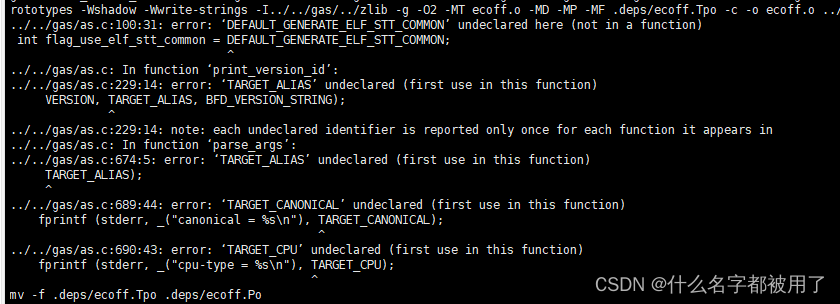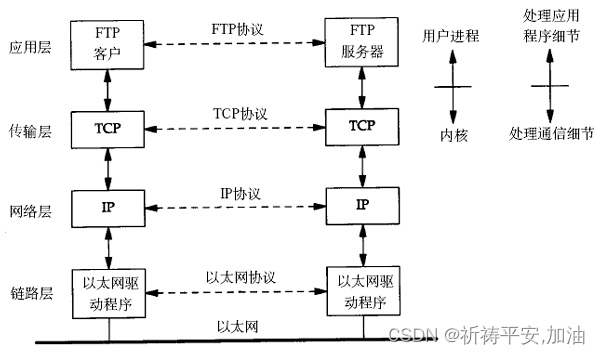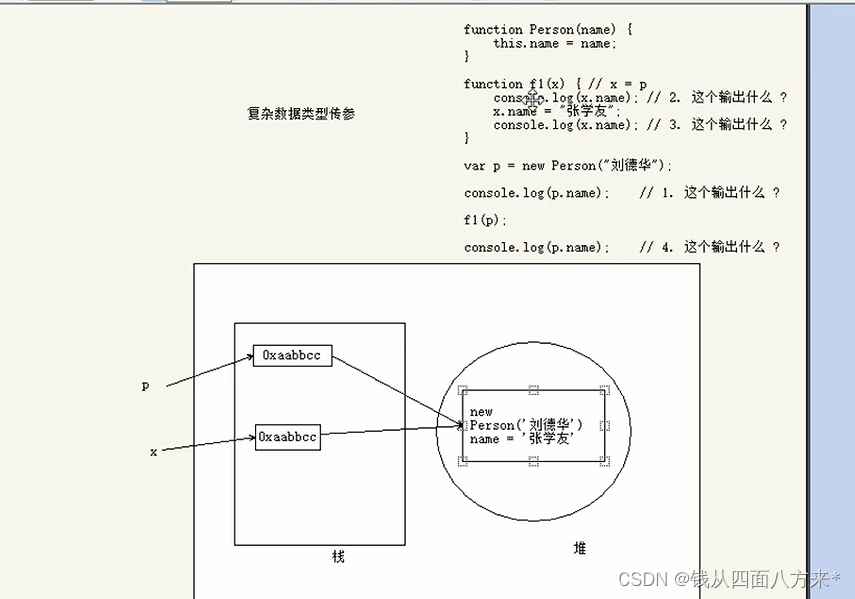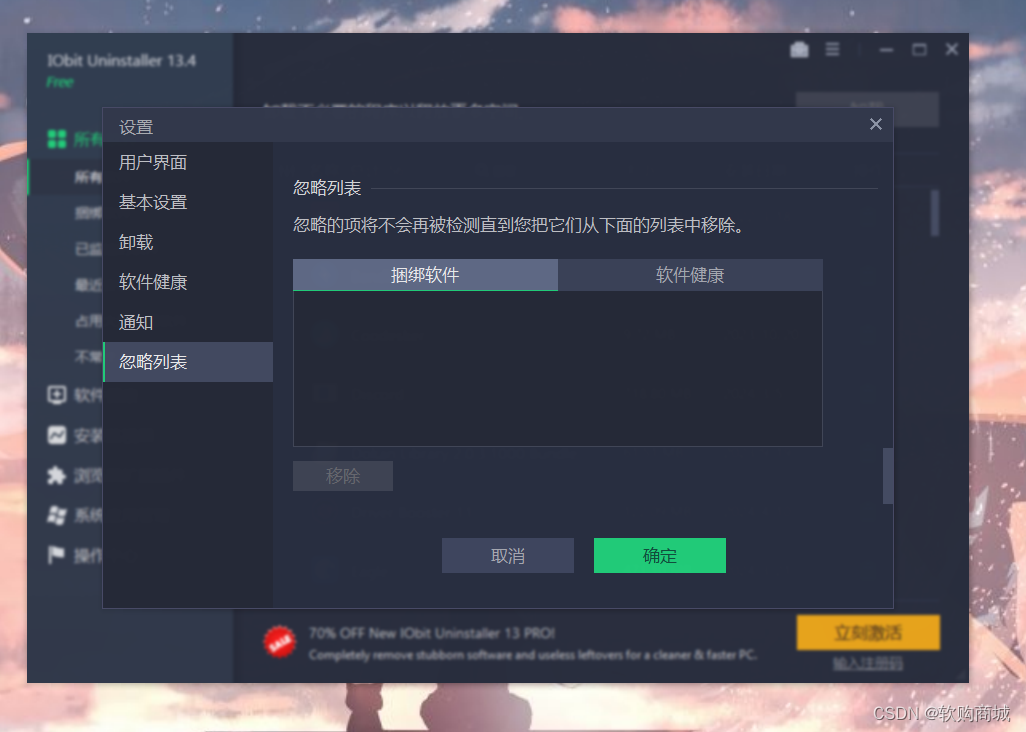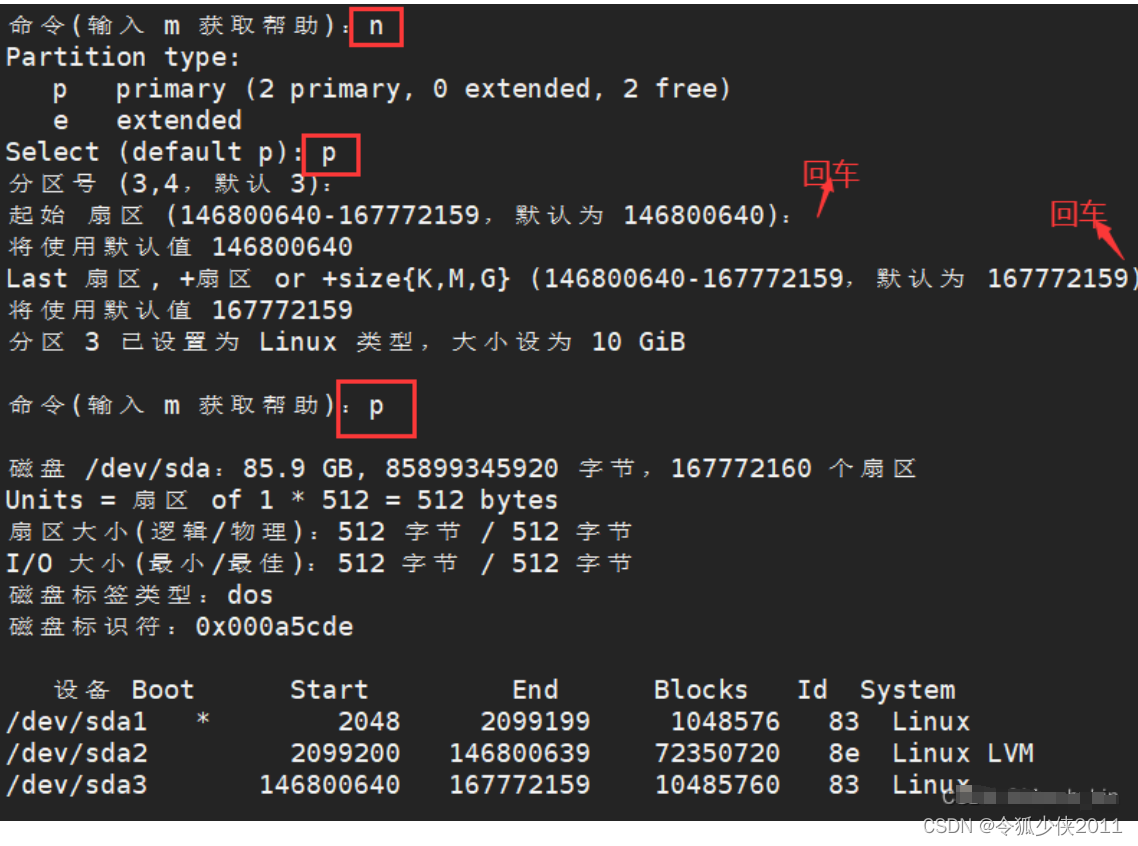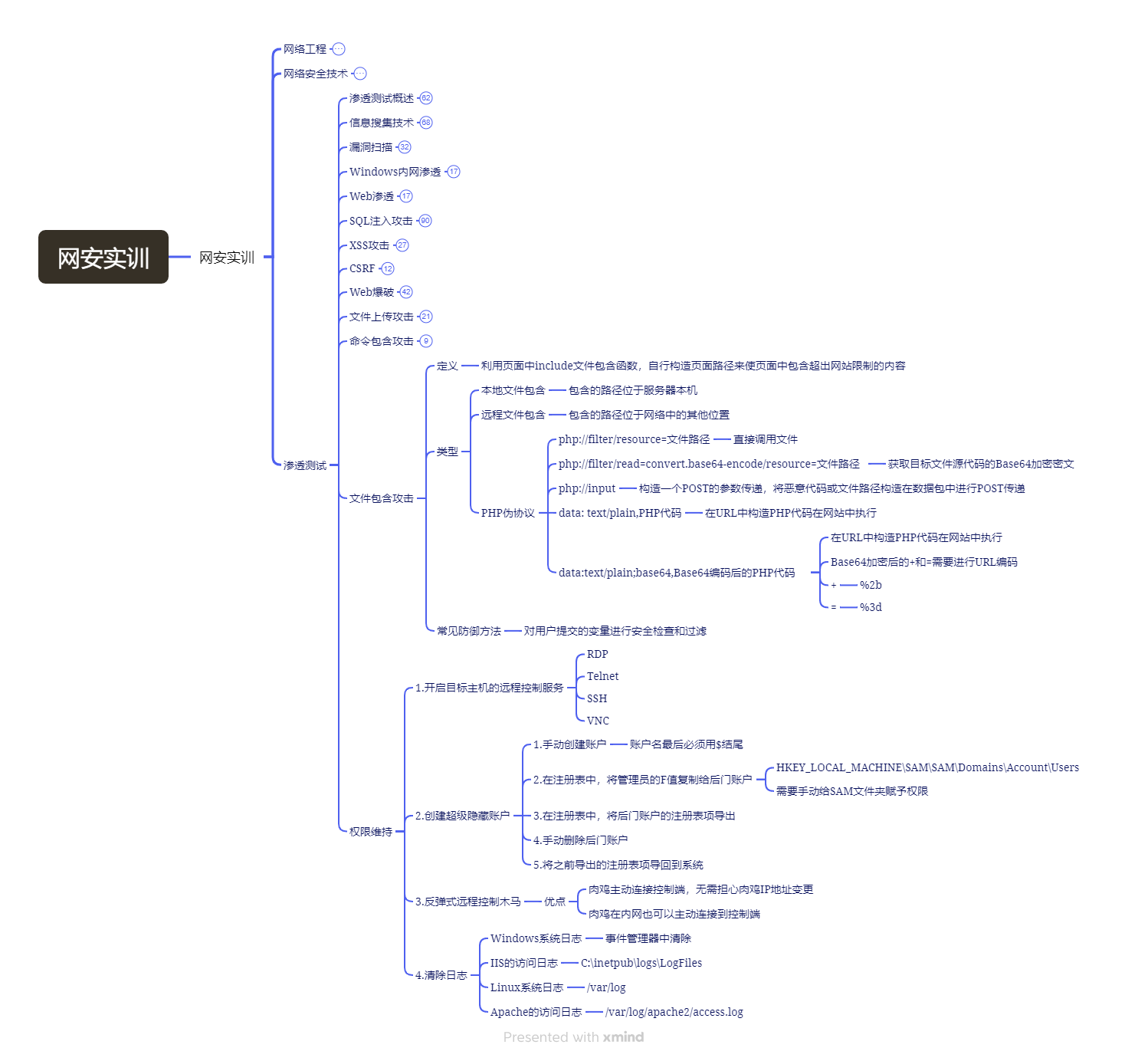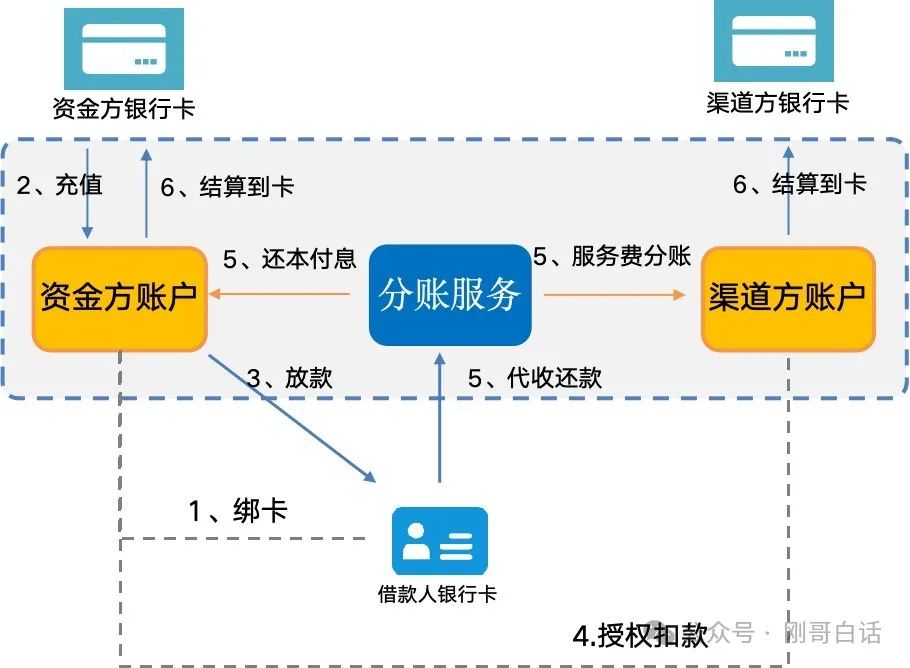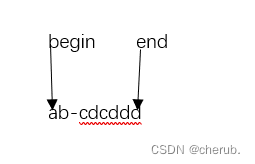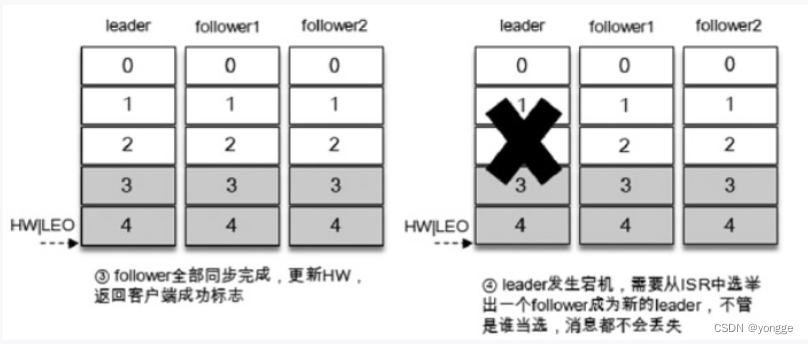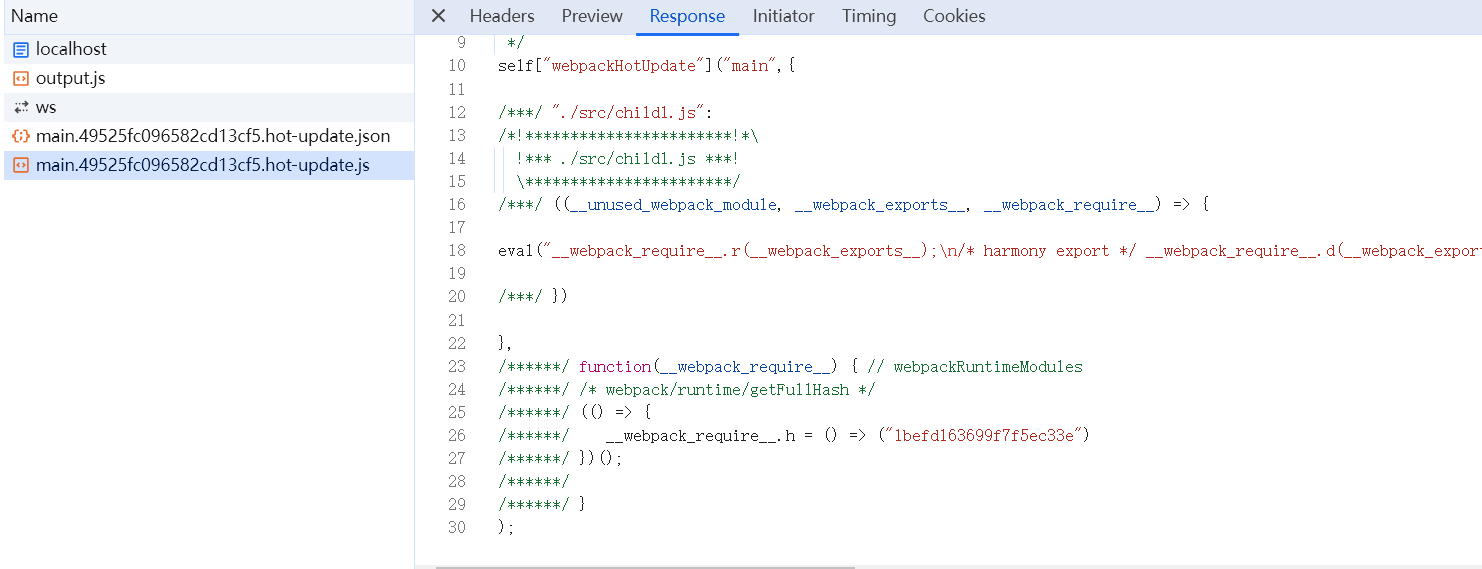原文:
pandas.pydata.org/docs/
PyArrow 功能
原文:
pandas.pydata.org/docs/user_guide/pyarrow.html
pandas 可以利用PyArrow来扩展功能并改善各种 API 的性能。这包括:
-
与 NumPy 相比,拥有更广泛的数据类型
-
对所有数据类型支持缺失数据(NA)
-
高性能 IO 读取器集成
-
便于与基于 Apache Arrow 规范的其他数据框架库(例如 polars、cuDF)进行互操作性
要使用此功能,请确保您已经安装了最低支持的 PyArrow 版本。
数据结构集成
一个Series、Index或DataFrame的列可以直接由pyarrow.ChunkedArray支持,这类似于 NumPy 数组。要从主要的 pandas 数据结构构造这些,您可以在dtype参数中传入类型后跟[pyarrow]的字符串,例如"int64[pyarrow]"。
In [1]: ser = pd.Series([-1.5, 0.2, None], dtype="float32[pyarrow]")
In [2]: ser
Out[2]:
0 -1.5
1 0.2
2 <NA>
dtype: float[pyarrow]
In [3]: idx = pd.Index([True, None], dtype="bool[pyarrow]")
In [4]: idx
Out[4]: Index([True, <NA>], dtype='bool[pyarrow]')
In [5]: df = pd.DataFrame([[1, 2], [3, 4]], dtype="uint64[pyarrow]")
In [6]: df
Out[6]:
0 1
0 1 2
1 3 4
注意
字符串别名"string[pyarrow]"映射到pd.StringDtype("pyarrow"),这与指定dtype=pd.ArrowDtype(pa.string())不等效。通常,对数据的操作行为会类似,除了pd.StringDtype("pyarrow")可以返回基于 NumPy 的可空类型,而pd.ArrowDtype(pa.string())将返回ArrowDtype。
In [7]: import pyarrow as pa
In [8]: data = list("abc")
In [9]: ser_sd = pd.Series(data, dtype="string[pyarrow]")
In [10]: ser_ad = pd.Series(data, dtype=pd.ArrowDtype(pa.string()))
In [11]: ser_ad.dtype == ser_sd.dtype
Out[11]: False
In [12]: ser_sd.str.contains("a")
Out[12]:
0 True
1 False
2 False
dtype: boolean
In [13]: ser_ad.str.contains("a")
Out[13]:
0 True
1 False
2 False
dtype: bool[pyarrow]
对于接受参数的 PyArrow 类型,您可以将带有这些参数的 PyArrow 类型传入ArrowDtype以在dtype参数中使用。
In [14]: import pyarrow as pa
In [15]: list_str_type = pa.list_(pa.string())
In [16]: ser = pd.Series([["hello"], ["there"]], dtype=pd.ArrowDtype(list_str_type))
In [17]: ser
Out[17]:
0 ['hello']
1 ['there']
dtype: list<item: string>[pyarrow]
In [18]: from datetime import time
In [19]: idx = pd.Index([time(12, 30), None], dtype=pd.ArrowDtype(pa.time64("us")))
In [20]: idx
Out[20]: Index([12:30:00, <NA>], dtype='time64[us][pyarrow]')
In [21]: from decimal import Decimal
In [22]: decimal_type = pd.ArrowDtype(pa.decimal128(3, scale=2))
In [23]: data = [[Decimal("3.19"), None], [None, Decimal("-1.23")]]
In [24]: df = pd.DataFrame(data, dtype=decimal_type)
In [25]: df
Out[25]:
0 1
0 3.19 <NA>
1 <NA> -1.23
如果您已经有一个pyarrow.Array或pyarrow.ChunkedArray,您可以将其传入arrays.ArrowExtensionArray以构造相关的Series、Index或DataFrame对象。
In [26]: pa_array = pa.array(
....: [{"1": "2"}, {"10": "20"}, None],
....: type=pa.map_(pa.string(), pa.string()),
....: )
....:
In [27]: ser = pd.Series(pd.arrays.ArrowExtensionArray(pa_array))
In [28]: ser
Out[28]:
0 [('1', '2')]
1 [('10', '20')]
2 <NA>
dtype: map<string, string>[pyarrow]
要从Series或Index中检索一个 pyarrow pyarrow.ChunkedArray,您可以在Series或Index上调用 pyarrow 数组构造函数。
In [29]: ser = pd.Series([1, 2, None], dtype="uint8[pyarrow]")
In [30]: pa.array(ser)
Out[30]:
<pyarrow.lib.UInt8Array object at 0x7ff2a2968400>
[
1,
2,
null
]
In [31]: idx = pd.Index(ser)
In [32]: pa.array(idx)
Out[32]:
<pyarrow.lib.UInt8Array object at 0x7ff2a2968460>
[
1,
2,
null
]
要将 pyarrow.Table 转换为 DataFrame,您可以使用 types_mapper=pd.ArrowDtype 调用 pyarrow.Table.to_pandas() 方法。
In [33]: table = pa.table([pa.array([1, 2, 3], type=pa.int64())], names=["a"])
In [34]: df = table.to_pandas(types_mapper=pd.ArrowDtype)
In [35]: df
Out[35]:
a
0 1
1 2
2 3
In [36]: df.dtypes
Out[36]:
a int64[pyarrow]
dtype: object
操作
PyArrow 数据结构集成是通过 pandas 的 ExtensionArray 接口 实现的;因此,在 pandas API 中集成了此接口的地方存在支持的功能。此外,当可用时,此功能通过 PyArrow compute functions 加速。这包括:
-
数值聚合
-
数值运算
-
数值舍入
-
逻辑和比较函数
-
字符串功能
-
日期时间功能
以下只是一些由本机 PyArrow 计算函数加速的操作示例。
In [37]: import pyarrow as pa
In [38]: ser = pd.Series([-1.545, 0.211, None], dtype="float32[pyarrow]")
In [39]: ser.mean()
Out[39]: -0.6669999808073044
In [40]: ser + ser
Out[40]:
0 -3.09
1 0.422
2 <NA>
dtype: float[pyarrow]
In [41]: ser > (ser + 1)
Out[41]:
0 False
1 False
2 <NA>
dtype: bool[pyarrow]
In [42]: ser.dropna()
Out[42]:
0 -1.545
1 0.211
dtype: float[pyarrow]
In [43]: ser.isna()
Out[43]:
0 False
1 False
2 True
dtype: bool
In [44]: ser.fillna(0)
Out[44]:
0 -1.545
1 0.211
2 0.0
dtype: float[pyarrow]
In [45]: ser_str = pd.Series(["a", "b", None], dtype=pd.ArrowDtype(pa.string()))
In [46]: ser_str.str.startswith("a")
Out[46]:
0 True
1 False
2 <NA>
dtype: bool[pyarrow]
In [47]: from datetime import datetime
In [48]: pa_type = pd.ArrowDtype(pa.timestamp("ns"))
In [49]: ser_dt = pd.Series([datetime(2022, 1, 1), None], dtype=pa_type)
In [50]: ser_dt.dt.strftime("%Y-%m")
Out[50]:
0 2022-01
1 <NA>
dtype: string[pyarrow]
I/O 读取
PyArrow 还提供了已集成到几个 pandas IO 读取器中的 IO 读取功能。以下函数提供了一个 engine 关键字,可以调度到 PyArrow 以加速从 IO 源读取。
-
read_csv() -
read_json() -
read_orc() -
read_feather()
In [51]: import io
In [52]: data = io.StringIO("""a,b,c
....: 1,2.5,True
....: 3,4.5,False
....: """)
....:
In [53]: df = pd.read_csv(data, engine="pyarrow")
In [54]: df
Out[54]:
a b c
0 1 2.5 True
1 3 4.5 False
默认情况下,这些函数和所有其他 IO 读取器函数返回 NumPy 支持的数据。这些读取器可以通过指定参数 dtype_backend="pyarrow" 返回 PyArrow 支持的数据。读取器不需要设置 engine="pyarrow" 来必然返回 PyArrow 支持的数据。
In [55]: import io
In [56]: data = io.StringIO("""a,b,c,d,e,f,g,h,i
....: 1,2.5,True,a,,,,,
....: 3,4.5,False,b,6,7.5,True,a,
....: """)
....:
In [57]: df_pyarrow = pd.read_csv(data, dtype_backend="pyarrow")
In [58]: df_pyarrow.dtypes
Out[58]:
a int64[pyarrow]
b double[pyarrow]
c bool[pyarrow]
d string[pyarrow]
e int64[pyarrow]
f double[pyarrow]
g bool[pyarrow]
h string[pyarrow]
i null[pyarrow]
dtype: object
还有几个非 IO 读取器函数也可以使用 dtype_backend 参数返回 PyArrow 支持的数据,包括:
-
to_numeric() -
DataFrame.convert_dtypes() -
Series.convert_dtypes()
数据结构集成
一个Series、Index或DataFrame的列可以直接由一个类似于 NumPy 数组的pyarrow.ChunkedArray支持,要从主要的 pandas���据结构构造这些对象,您可以在类型后面加上[pyarrow]的字符串,例如"int64[pyarrow]"传递给dtype参数
In [1]: ser = pd.Series([-1.5, 0.2, None], dtype="float32[pyarrow]")
In [2]: ser
Out[2]:
0 -1.5
1 0.2
2 <NA>
dtype: float[pyarrow]
In [3]: idx = pd.Index([True, None], dtype="bool[pyarrow]")
In [4]: idx
Out[4]: Index([True, <NA>], dtype='bool[pyarrow]')
In [5]: df = pd.DataFrame([[1, 2], [3, 4]], dtype="uint64[pyarrow]")
In [6]: df
Out[6]:
0 1
0 1 2
1 3 4
注意
字符串别名"string[pyarrow]"映射到pd.StringDtype("pyarrow"),这与指定dtype=pd.ArrowDtype(pa.string())不等效。通常,对数据的操作行为类似,除了pd.StringDtype("pyarrow")可以返回基于 NumPy 的可空类型,而pd.ArrowDtype(pa.string())将返回ArrowDtype。
In [7]: import pyarrow as pa
In [8]: data = list("abc")
In [9]: ser_sd = pd.Series(data, dtype="string[pyarrow]")
In [10]: ser_ad = pd.Series(data, dtype=pd.ArrowDtype(pa.string()))
In [11]: ser_ad.dtype == ser_sd.dtype
Out[11]: False
In [12]: ser_sd.str.contains("a")
Out[12]:
0 True
1 False
2 False
dtype: boolean
In [13]: ser_ad.str.contains("a")
Out[13]:
0 True
1 False
2 False
dtype: bool[pyarrow]
对于接受参数的 PyArrow 类型,您可以将带有这些参数的 PyArrow 类型传递给ArrowDtype以在dtype参数中使用。
In [14]: import pyarrow as pa
In [15]: list_str_type = pa.list_(pa.string())
In [16]: ser = pd.Series([["hello"], ["there"]], dtype=pd.ArrowDtype(list_str_type))
In [17]: ser
Out[17]:
0 ['hello']
1 ['there']
dtype: list<item: string>[pyarrow]
In [18]: from datetime import time
In [19]: idx = pd.Index([time(12, 30), None], dtype=pd.ArrowDtype(pa.time64("us")))
In [20]: idx
Out[20]: Index([12:30:00, <NA>], dtype='time64[us][pyarrow]')
In [21]: from decimal import Decimal
In [22]: decimal_type = pd.ArrowDtype(pa.decimal128(3, scale=2))
In [23]: data = [[Decimal("3.19"), None], [None, Decimal("-1.23")]]
In [24]: df = pd.DataFrame(data, dtype=decimal_type)
In [25]: df
Out[25]:
0 1
0 3.19 <NA>
1 <NA> -1.23
如果您已经有一个pyarrow.Array或pyarrow.ChunkedArray,您可以将其传递给arrays.ArrowExtensionArray以构造相关的Series、Index或DataFrame对象。
In [26]: pa_array = pa.array(
....: [{"1": "2"}, {"10": "20"}, None],
....: type=pa.map_(pa.string(), pa.string()),
....: )
....:
In [27]: ser = pd.Series(pd.arrays.ArrowExtensionArray(pa_array))
In [28]: ser
Out[28]:
0 [('1', '2')]
1 [('10', '20')]
2 <NA>
dtype: map<string, string>[pyarrow]
要从Series或Index中检索一个 pyarrow pyarrow.ChunkedArray,您可以在Series或Index上调用 pyarrow 数组构造函数。
In [29]: ser = pd.Series([1, 2, None], dtype="uint8[pyarrow]")
In [30]: pa.array(ser)
Out[30]:
<pyarrow.lib.UInt8Array object at 0x7ff2a2968400>
[
1,
2,
null
]
In [31]: idx = pd.Index(ser)
In [32]: pa.array(idx)
Out[32]:
<pyarrow.lib.UInt8Array object at 0x7ff2a2968460>
[
1,
2,
null
]
要将pyarrow.Table转换为DataFrame,您可以使用types_mapper=pd.ArrowDtype调用pyarrow.Table.to_pandas()方法。
In [33]: table = pa.table([pa.array([1, 2, 3], type=pa.int64())], names=["a"])
In [34]: df = table.to_pandas(types_mapper=pd.ArrowDtype)
In [35]: df
Out[35]:
a
0 1
1 2
2 3
In [36]: df.dtypes
Out[36]:
a int64[pyarrow]
dtype: object
操作
PyArrow 数据结构集成是通过 pandas 的ExtensionArray 接口实现的;因此,在 pandas API 中集成了此接口的地方存在支持的功能。此外,此功能在可用时通过 PyArrow compute functions加速。这包括:
-
数值聚合
-
数值运算
-
数值舍入
-
逻辑和比较函数
-
字符串功能
-
日期时间功能
以下只是一些由本机 PyArrow 计算函数加速的操作示例。
In [37]: import pyarrow as pa
In [38]: ser = pd.Series([-1.545, 0.211, None], dtype="float32[pyarrow]")
In [39]: ser.mean()
Out[39]: -0.6669999808073044
In [40]: ser + ser
Out[40]:
0 -3.09
1 0.422
2 <NA>
dtype: float[pyarrow]
In [41]: ser > (ser + 1)
Out[41]:
0 False
1 False
2 <NA>
dtype: bool[pyarrow]
In [42]: ser.dropna()
Out[42]:
0 -1.545
1 0.211
dtype: float[pyarrow]
In [43]: ser.isna()
Out[43]:
0 False
1 False
2 True
dtype: bool
In [44]: ser.fillna(0)
Out[44]:
0 -1.545
1 0.211
2 0.0
dtype: float[pyarrow]
In [45]: ser_str = pd.Series(["a", "b", None], dtype=pd.ArrowDtype(pa.string()))
In [46]: ser_str.str.startswith("a")
Out[46]:
0 True
1 False
2 <NA>
dtype: bool[pyarrow]
In [47]: from datetime import datetime
In [48]: pa_type = pd.ArrowDtype(pa.timestamp("ns"))
In [49]: ser_dt = pd.Series([datetime(2022, 1, 1), None], dtype=pa_type)
In [50]: ser_dt.dt.strftime("%Y-%m")
Out[50]:
0 2022-01
1 <NA>
dtype: string[pyarrow]
I/O 读取
PyArrow 还提供了已集成到几个 pandas IO 读取器中的 IO 读取功能。以下函数提供了一个engine关键字,可以调度到 PyArrow 以加速从 IO 源读取。
-
read_csv() -
read_json() -
read_orc() -
read_feather()
In [51]: import io
In [52]: data = io.StringIO("""a,b,c
....: 1,2.5,True
....: 3,4.5,False
....: """)
....:
In [53]: df = pd.read_csv(data, engine="pyarrow")
In [54]: df
Out[54]:
a b c
0 1 2.5 True
1 3 4.5 False
默认情况下,这些函数和所有其他 IO 读取函数返回 NumPy 支持的数据。通过指定参数dtype_backend="pyarrow",这些读取器可以返回 PyArrow 支持的数据。读取器不需要设置engine="pyarrow"来必然返回 PyArrow 支持的数据。
In [55]: import io
In [56]: data = io.StringIO("""a,b,c,d,e,f,g,h,i
....: 1,2.5,True,a,,,,,
....: 3,4.5,False,b,6,7.5,True,a,
....: """)
....:
In [57]: df_pyarrow = pd.read_csv(data, dtype_backend="pyarrow")
In [58]: df_pyarrow.dtypes
Out[58]:
a int64[pyarrow]
b double[pyarrow]
c bool[pyarrow]
d string[pyarrow]
e int64[pyarrow]
f double[pyarrow]
g bool[pyarrow]
h string[pyarrow]
i null[pyarrow]
dtype: object
还有一些非 IO 读取函数也可以使用dtype_backend参数返回 PyArrow 支持的数据,包括:
-
to_numeric() -
DataFrame.convert_dtypes() -
Series.convert_dtypes()
索引和选择数据
原文:
pandas.pydata.org/docs/user_guide/indexing.html
pandas 对象中的轴标签信息具有多种用途:
-
使用已知指标标识数据(即提供 元数据),对于分析、可视化和交互式控制台显示非常重要。
-
启用自动和明确的数据对齐。
-
允许直观地获取和设置数据集的子集。
在本节中,我们将重点放在最后一点上:即如何切片、切块和通常获取和设置 pandas 对象的子集。���要关注将放在 Series 和 DataFrame 上,因为它们在这个领域接受了更多的开发关注。
注意
Python 和 NumPy 索引运算符 [] 和属性运算符 . 提供了对 pandas 数据结构的快速简便访问,适用于各种用例。这使得交互式工作变得直观,因为如果你已经知道如何处理 Python 字典和 NumPy 数组,那么学习成本很低。然而,由于要访问的数据类型事先未知,直接使用标准运算符存在一些优化限制。对于生产代码,我们建议您利用本章节中提供的优化的 pandas 数据访问方法。
警告
对于设置操作,返回的是副本还是引用,可能取决于上下文。有时这被称为 chained assignment,应该避免。请参阅返回视图与副本。
在 MultiIndex / 高级索引中查看 MultiIndex 和更高级的索引文档。
在食谱中查看一些高级策略。
不同的索引选择
为了支持更明确的基于位置的索引,对象选择已经增加了一些用户请求的内容。pandas 现在支持三种类型的多轴索引。
-
.loc主要基于标签,但也可以与布尔数组一起使用。当未找到项目时,.loc会引发KeyError。允许的输入包括:- 单个标签,例如
5或'a'(请注意,5被解释为索引的 标签。这种用法不是索引上的整数位置。)。 - 一个标签列表或数组
['a', 'b', 'c']。 - 一个带有标签
'a':'f'的切片对象(请注意,与通常的 Python 切片相反,开始和停止都包括在内,当存在于索引中时!请参阅使用标签切片和端点是包含的。) - 布尔数组(任何
NA值将被视为False)。 - 一个带有一个参数(调用的 Series 或 DataFrame)的
callable函数,并返回用于索引的有效输出(上述之一)。 - 一个包含上述输入之一的行(和列)索引的元组。
在按标签选择中查看更多信息。
- 单个标签,例如
-
.iloc主要基于整数位置(从轴的0到length-1),但也可以与布尔数组一起使用。如果请求的索引器超出范围,.iloc将引发IndexError,除了切片索引器允许超出范围索引(这符合 Python/NumPy 的切片语义)。允许的输入为:- 一个整数,例如
5。 - 整数列表或数组
[4, 3, 0]。 - 一个包含整数
1:7的切片对象。 - 布尔数组(任何
NA值将被视为False)。 - 一个带有一个参数(调用的 Series 或 DataFrame)的
callable函数,并返回用于索引的有效输出(上述之一)。 - 一个包含行(和列)索引的元组,其元素是上述输入之一。
查看更多内容请参考按位置选择,高级索引和高级分层。
- 一个整数,例如
-
.loc、.iloc,以及[]索引可以接受callable作为索引器。查看更多内容请参考按 callable 选择。注意
将元组键解构为行(和列)索引发生在调用可调用函数之前,因此您不能从可调用函数返回元组以同时索引���和列。
从具有多轴选择的对象获取值使用以下表示法(以.loc为例,但以下内容也适用于.iloc)。任何轴访问器都可以是空切片:。规范中省略的轴被假定为:,例如p.loc['a']等同于p.loc['a', :]。
| 对象类型 | 索引器 |
|---|---|
| Series | s.loc[indexer] |
| DataFrame | df.loc[row_indexer,column_indexer] | ## 基础知识
如在上一节介绍数据结构时提到的,使用[]进行索引(在 Python 中实现类行为的熟悉者称之为__getitem__)的主要功能是选择出低维度切片。下表显示了使用[]对 pandas 对象进行索引时的返回类型值:
| 对象类型 | 选择 | 返回值类型 |
|---|---|---|
| Series | series[label] | 标量值 |
| DataFrame | frame[colname] | 与 colname 对应的Series |
这里我们构建一个简单的时间序列数据集,用于说明索引功能:
In [1]: dates = pd.date_range('1/1/2000', periods=8)
In [2]: df = pd.DataFrame(np.random.randn(8, 4),
...: index=dates, columns=['A', 'B', 'C', 'D'])
...:
In [3]: df
Out[3]:
A B C D
2000-01-01 0.469112 -0.282863 -1.509059 -1.135632
2000-01-02 1.212112 -0.173215 0.119209 -1.044236
2000-01-03 -0.861849 -2.104569 -0.494929 1.071804
2000-01-04 0.721555 -0.706771 -1.039575 0.271860
2000-01-05 -0.424972 0.567020 0.276232 -1.087401
2000-01-06 -0.673690 0.113648 -1.478427 0.524988
2000-01-07 0.404705 0.577046 -1.715002 -1.039268
2000-01-08 -0.370647 -1.157892 -1.344312 0.844885
注意
除非特别说明,否则索引功能都不是特定于时间序列的。
因此,根据上述,我们可以使用[]进行最基本的索引:
In [4]: s = df['A']
In [5]: s[dates[5]]
Out[5]: -0.6736897080883706
您可以传递一个列列表给[]以按顺序选择列。如果 DataFrame 中不包含某列,将引发异常。也可以以这种方式设置多个列:
In [6]: df
Out[6]:
A B C D
2000-01-01 0.469112 -0.282863 -1.509059 -1.135632
2000-01-02 1.212112 -0.173215 0.119209 -1.044236
2000-01-03 -0.861849 -2.104569 -0.494929 1.071804
2000-01-04 0.721555 -0.706771 -1.039575 0.271860
2000-01-05 -0.424972 0.567020 0.276232 -1.087401
2000-01-06 -0.673690 0.113648 -1.478427 0.524988
2000-01-07 0.404705 0.577046 -1.715002 -1.039268
2000-01-08 -0.370647 -1.157892 -1.344312 0.844885
In [7]: df[['B', 'A']] = df[['A', 'B']]
In [8]: df
Out[8]:
A B C D
2000-01-01 -0.282863 0.469112 -1.509059 -1.135632
2000-01-02 -0.173215 1.212112 0.119209 -1.044236
2000-01-03 -2.104569 -0.861849 -0.494929 1.071804
2000-01-04 -0.706771 0.721555 -1.039575 0.271860
2000-01-05 0.567020 -0.424972 0.276232 -1.087401
2000-01-06 0.113648 -0.673690 -1.478427 0.524988
2000-01-07 0.577046 0.404705 -1.715002 -1.039268
2000-01-08 -1.157892 -0.370647 -1.344312 0.844885
您可能会发现这对于对一部分列应用变换(就地)很有用。
警告
当使用.loc设置Series和DataFrame时,pandas 会对齐所有轴。
这不会修改df,因为列对齐是在赋值之前进行的。
In [9]: df[['A', 'B']]
Out[9]:
A B
2000-01-01 -0.282863 0.469112
2000-01-02 -0.173215 1.212112
2000-01-03 -2.104569 -0.861849
2000-01-04 -0.706771 0.721555
2000-01-05 0.567020 -0.424972
2000-01-06 0.113648 -0.673690
2000-01-07 0.577046 0.404705
2000-01-08 -1.157892 -0.370647
In [10]: df.loc[:, ['B', 'A']] = df[['A', 'B']]
In [11]: df[['A', 'B']]
Out[11]:
A B
2000-01-01 -0.282863 0.469112
2000-01-02 -0.173215 1.212112
2000-01-03 -2.104569 -0.861849
2000-01-04 -0.706771 0.721555
2000-01-05 0.567020 -0.424972
2000-01-06 0.113648 -0.673690
2000-01-07 0.577046 0.404705
2000-01-08 -1.157892 -0.370647
交换列值的正确方式是使用原始值:
In [12]: df.loc[:, ['B', 'A']] = df[['A', 'B']].to_numpy()
In [13]: df[['A', 'B']]
Out[13]:
A B
2000-01-01 0.469112 -0.282863
2000-01-02 1.212112 -0.173215
2000-01-03 -0.861849 -2.104569
2000-01-04 0.721555 -0.706771
2000-01-05 -0.424972 0.567020
2000-01-06 -0.673690 0.113648
2000-01-07 0.404705 0.577046
2000-01-08 -0.370647 -1.157892
然而,当使用.iloc设置Series和DataFrame时,pandas 不会对轴进行对齐,因为.iloc是按位置操作的。
这将修改df,因为在值分配之前未执行列对齐。
In [14]: df[['A', 'B']]
Out[14]:
A B
2000-01-01 0.469112 -0.282863
2000-01-02 1.212112 -0.173215
2000-01-03 -0.861849 -2.104569
2000-01-04 0.721555 -0.706771
2000-01-05 -0.424972 0.567020
2000-01-06 -0.673690 0.113648
2000-01-07 0.404705 0.577046
2000-01-08 -0.370647 -1.157892
In [15]: df.iloc[:, [1, 0]] = df[['A', 'B']]
In [16]: df[['A','B']]
Out[16]:
A B
2000-01-01 -0.282863 0.469112
2000-01-02 -0.173215 1.212112
2000-01-03 -2.104569 -0.861849
2000-01-04 -0.706771 0.721555
2000-01-05 0.567020 -0.424972
2000-01-06 0.113648 -0.673690
2000-01-07 0.577046 0.404705
2000-01-08 -1.157892 -0.370647
属性访问
您可以直接访问Series上的索引或DataFrame上的列作为属性:
In [17]: sa = pd.Series([1, 2, 3], index=list('abc'))
In [18]: dfa = df.copy()
In [19]: sa.b
Out[19]: 2
In [20]: dfa.A
Out[20]:
2000-01-01 -0.282863
2000-01-02 -0.173215
2000-01-03 -2.104569
2000-01-04 -0.706771
2000-01-05 0.567020
2000-01-06 0.113648
2000-01-07 0.577046
2000-01-08 -1.157892
Freq: D, Name: A, dtype: float64
In [21]: sa.a = 5
In [22]: sa
Out[22]:
a 5
b 2
c 3
dtype: int64
In [23]: dfa.A = list(range(len(dfa.index))) # ok if A already exists
In [24]: dfa
Out[24]:
A B C D
2000-01-01 0 0.469112 -1.509059 -1.135632
2000-01-02 1 1.212112 0.119209 -1.044236
2000-01-03 2 -0.861849 -0.494929 1.071804
2000-01-04 3 0.721555 -1.039575 0.271860
2000-01-05 4 -0.424972 0.276232 -1.087401
2000-01-06 5 -0.673690 -1.478427 0.524988
2000-01-07 6 0.404705 -1.715002 -1.039268
2000-01-08 7 -0.370647 -1.344312 0.844885
In [25]: dfa['A'] = list(range(len(dfa.index))) # use this form to create a new column
In [26]: dfa
Out[26]:
A B C D
2000-01-01 0 0.469112 -1.509059 -1.135632
2000-01-02 1 1.212112 0.119209 -1.044236
2000-01-03 2 -0.861849 -0.494929 1.071804
2000-01-04 3 0.721555 -1.039575 0.271860
2000-01-05 4 -0.424972 0.276232 -1.087401
2000-01-06 5 -0.673690 -1.478427 0.524988
2000-01-07 6 0.404705 -1.715002 -1.039268
2000-01-08 7 -0.370647 -1.344312 0.844885
警告
-
只有当索引元素是有效的 Python 标识符时,才能使用此访问,例如
s.1是不允许的。请参阅此处以获取有效标识符的解释。 -
如果属性与现有方法名称冲突,则该属性将不可用,例如
s.min是不允许的,但s['min']是可能的。 -
类似地,如果属性与以下列表中的任何一个冲突,则该属性将不可用:
index,major_axis,minor_axis,items。 -
在任何这些情况下,标准索引仍然有效,例如
s['1'],s['min']和s['index']将访问相应的元素或列。
如果您在 IPython 环境中使用,还可以使用制表符补全来查看这些可访问的属性。
您还可以将dict分配给DataFrame的一行:
In [27]: x = pd.DataFrame({'x': [1, 2, 3], 'y': [3, 4, 5]})
In [28]: x.iloc[1] = {'x': 9, 'y': 99}
In [29]: x
Out[29]:
x y
0 1 3
1 9 99
2 3 5
您可以使用属性访问来修改 Series 的现有元素或 DataFrame 的列,但要小心;如果尝试使用属性访问创建新列,则会创建一个新属性而不是新列,并且会引发UserWarning:
In [30]: df_new = pd.DataFrame({'one': [1., 2., 3.]})
In [31]: df_new.two = [4, 5, 6]
In [32]: df_new
Out[32]:
one
0 1.0
1 2.0
2 3.0
切片范围
沿着任意轴切片范围的最稳健和一致的方法在按位置选择部分详细描述了.iloc方法。现在,我们解释使用[]运算符进行切片的语义。
对于 Series,语法与 ndarray 完全相同,返回值的切片和相应的标签:
In [33]: s[:5]
Out[33]:
2000-01-01 0.469112
2000-01-02 1.212112
2000-01-03 -0.861849
2000-01-04 0.721555
2000-01-05 -0.424972
Freq: D, Name: A, dtype: float64
In [34]: s[::2]
Out[34]:
2000-01-01 0.469112
2000-01-03 -0.861849
2000-01-05 -0.424972
2000-01-07 0.404705
Freq: 2D, Name: A, dtype: float64
In [35]: s[::-1]
Out[35]:
2000-01-08 -0.370647
2000-01-07 0.404705
2000-01-06 -0.673690
2000-01-05 -0.424972
2000-01-04 0.721555
2000-01-03 -0.861849
2000-01-02 1.212112
2000-01-01 0.469112
Freq: -1D, Name: A, dtype: float64
请注意,设置也有效:
In [36]: s2 = s.copy()
In [37]: s2[:5] = 0
In [38]: s2
Out[38]:
2000-01-01 0.000000
2000-01-02 0.000000
2000-01-03 0.000000
2000-01-04 0.000000
2000-01-05 0.000000
2000-01-06 -0.673690
2000-01-07 0.404705
2000-01-08 -0.370647
Freq: D, Name: A, dtype: float64
对于 DataFrame,在[]内部切片切片行。这在很大程度上是为了方便,因为这是一个常见的操作。
In [39]: df[:3]
Out[39]:
A B C D
2000-01-01 -0.282863 0.469112 -1.509059 -1.135632
2000-01-02 -0.173215 1.212112 0.119209 -1.044236
2000-01-03 -2.104569 -0.861849 -0.494929 1.071804
In [40]: df[::-1]
Out[40]:
A B C D
2000-01-08 -1.157892 -0.370647 -1.344312 0.844885
2000-01-07 0.577046 0.404705 -1.715002 -1.039268
2000-01-06 0.113648 -0.673690 -1.478427 0.524988
2000-01-05 0.567020 -0.424972 0.276232 -1.087401
2000-01-04 -0.706771 0.721555 -1.039575 0.271860
2000-01-03 -2.104569 -0.861849 -0.494929 1.071804
2000-01-02 -0.173215 1.212112 0.119209 -1.044236
2000-01-01 -0.282863 0.469112 -1.509059 -1.135632
按标签选择
警告
在设置操作中,返回的是副本还是引用,可能取决于上下文。有时这被称为链式赋值,应该避免。请参阅返回视图与副本。
警告
当您提供与索引类型不兼容(或可转换)的切片器时,
.loc是严格的。例如,在DatetimeIndex中使用整数。这将引发TypeError。In [41]: dfl = pd.DataFrame(np.random.randn(5, 4), ....: columns=list('ABCD'), ....: index=pd.date_range('20130101', periods=5)) ....: In [42]: dfl Out[42]: A B C D 2013-01-01 1.075770 -0.109050 1.643563 -1.469388 2013-01-02 0.357021 -0.674600 -1.776904 -0.968914 2013-01-03 -1.294524 0.413738 0.276662 -0.472035 2013-01-04 -0.013960 -0.362543 -0.006154 -0.923061 2013-01-05 0.895717 0.805244 -1.206412 2.565646 In [43]: dfl.loc[2:3] --------------------------------------------------------------------------- TypeError Traceback (most recent call last) Cell In[43], line 1 ----> 1 dfl.loc[2:3] File ~/work/pandas/pandas/pandas/core/indexing.py:1191, in _LocationIndexer.__getitem__(self, key) 1189 maybe_callable = com.apply_if_callable(key, self.obj) 1190 maybe_callable = self._check_deprecated_callable_usage(key, maybe_callable) -> 1191 return self._getitem_axis(maybe_callable, axis=axis) File ~/work/pandas/pandas/pandas/core/indexing.py:1411, in _LocIndexer._getitem_axis(self, key, axis) 1409 if isinstance(key, slice): 1410 self._validate_key(key, axis) -> 1411 return self._get_slice_axis(key, axis=axis) 1412 elif com.is_bool_indexer(key): 1413 return self._getbool_axis(key, axis=axis) File ~/work/pandas/pandas/pandas/core/indexing.py:1443, in _LocIndexer._get_slice_axis(self, slice_obj, axis) 1440 return obj.copy(deep=False) 1442 labels = obj._get_axis(axis) -> 1443 indexer = labels.slice_indexer(slice_obj.start, slice_obj.stop, slice_obj.step) 1445 if isinstance(indexer, slice): 1446 return self.obj._slice(indexer, axis=axis) File ~/work/pandas/pandas/pandas/core/indexes/datetimes.py:682, in DatetimeIndex.slice_indexer(self, start, end, step) 674 # GH#33146 if start and end are combinations of str and None and Index is not 675 # monotonic, we can not use Index.slice_indexer because it does not honor the 676 # actual elements, is only searching for start and end 677 if ( 678 check_str_or_none(start) 679 or check_str_or_none(end) 680 or self.is_monotonic_increasing 681 ): --> 682 return Index.slice_indexer(self, start, end, step) 684 mask = np.array(True) 685 in_index = True File ~/work/pandas/pandas/pandas/core/indexes/base.py:6662, in Index.slice_indexer(self, start, end, step) 6618 def slice_indexer( 6619 self, 6620 start: Hashable | None = None, 6621 end: Hashable | None = None, 6622 step: int | None = None, 6623 ) -> slice: 6624 """ 6625 Compute the slice indexer for input labels and step. 6626 (...) 6660 slice(1, 3, None) 6661 """ -> 6662 start_slice, end_slice = self.slice_locs(start, end, step=step) 6664 # return a slice 6665 if not is_scalar(start_slice): File ~/work/pandas/pandas/pandas/core/indexes/base.py:6879, in Index.slice_locs(self, start, end, step) 6877 start_slice = None 6878 if start is not None: -> 6879 start_slice = self.get_slice_bound(start, "left") 6880 if start_slice is None: 6881 start_slice = 0 File ~/work/pandas/pandas/pandas/core/indexes/base.py:6794, in Index.get_slice_bound(self, label, side) 6790 original_label = label 6792 # For datetime indices label may be a string that has to be converted 6793 # to datetime boundary according to its resolution. -> 6794 label = self._maybe_cast_slice_bound(label, side) 6796 # we need to look up the label 6797 try: File ~/work/pandas/pandas/pandas/core/indexes/datetimes.py:642, in DatetimeIndex._maybe_cast_slice_bound(self, label, side) 637 if isinstance(label, dt.date) and not isinstance(label, dt.datetime): 638 # Pandas supports slicing with dates, treated as datetimes at midnight. 639 # https://github.com/pandas-dev/pandas/issues/31501 640 label = Timestamp(label).to_pydatetime() --> 642 label = super()._maybe_cast_slice_bound(label, side) 643 self._data._assert_tzawareness_compat(label) 644 return Timestamp(label) File ~/work/pandas/pandas/pandas/core/indexes/datetimelike.py:378, in DatetimeIndexOpsMixin._maybe_cast_slice_bound(self, label, side) 376 return lower if side == "left" else upper 377 elif not isinstance(label, self._data._recognized_scalars): --> 378 self._raise_invalid_indexer("slice", label) 380 return label File ~/work/pandas/pandas/pandas/core/indexes/base.py:4301, in Index._raise_invalid_indexer(self, form, key, reraise) 4299 if reraise is not lib.no_default: 4300 raise TypeError(msg) from reraise -> 4301 raise TypeError(msg) TypeError: cannot do slice indexing on DatetimeIndex with these indexers [2] of type int
字符串切片中的可以转换为索引类型,并导致自然切片。
In [44]: dfl.loc['20130102':'20130104']
Out[44]:
A B C D
2013-01-02 0.357021 -0.674600 -1.776904 -0.968914
2013-01-03 -1.294524 0.413738 0.276662 -0.472035
2013-01-04 -0.013960 -0.362543 -0.006154 -0.923061
pandas 提供了一套方法,以实现纯标签索引。这是一个严格的包含协议。每个要求的标签必须在索引中,否则将引发KeyError。在切片时,如果存在于索引中,则起始边界和停止边界都包括。整数是有效的标签,但它们指的是标签而不是位置。
.loc属性是主要的访问方法。以下是有效的输入:
-
一个单个标签,例如
5或'a'(请注意,5被解释为索引的标签。这种用法不是索引上的整数位置。)。 -
一个标签列表或数组
['a', 'b', 'c']。 -
一个带有标签
'a':'f'的切片对象(请注意,与通常的 Python 切片相反,当索引中存在时,起始和停止都包括在内!请参见使用标签切片)。 -
一个布尔数组。
-
一个
callable,请参见通过 callable 选择。
In [45]: s1 = pd.Series(np.random.randn(6), index=list('abcdef'))
In [46]: s1
Out[46]:
a 1.431256
b 1.340309
c -1.170299
d -0.226169
e 0.410835
f 0.813850
dtype: float64
In [47]: s1.loc['c':]
Out[47]:
c -1.170299
d -0.226169
e 0.410835
f 0.813850
dtype: float64
In [48]: s1.loc['b']
Out[48]: 1.3403088497993827
请注意,设置也可以:
In [49]: s1.loc['c':] = 0
In [50]: s1
Out[50]:
a 1.431256
b 1.340309
c 0.000000
d 0.000000
e 0.000000
f 0.000000
dtype: float64
使用 DataFrame:
In [51]: df1 = pd.DataFrame(np.random.randn(6, 4),
....: index=list('abcdef'),
....: columns=list('ABCD'))
....:
In [52]: df1
Out[52]:
A B C D
a 0.132003 -0.827317 -0.076467 -1.187678
b 1.130127 -1.436737 -1.413681 1.607920
c 1.024180 0.569605 0.875906 -2.211372
d 0.974466 -2.006747 -0.410001 -0.078638
e 0.545952 -1.219217 -1.226825 0.769804
f -1.281247 -0.727707 -0.121306 -0.097883
In [53]: df1.loc[['a', 'b', 'd'], :]
Out[53]:
A B C D
a 0.132003 -0.827317 -0.076467 -1.187678
b 1.130127 -1.436737 -1.413681 1.607920
d 0.974466 -2.006747 -0.410001 -0.078638
通过标签切片访问:
In [54]: df1.loc['d':, 'A':'C']
Out[54]:
A B C
d 0.974466 -2.006747 -0.410001
e 0.545952 -1.219217 -1.226825
f -1.281247 -0.727707 -0.121306
通过标签获取交叉部分(等同于df.xs('a')):
In [55]: df1.loc['a']
Out[55]:
A 0.132003
B -0.827317
C -0.076467
D -1.187678
Name: a, dtype: float64
通过布尔数组获取值:
In [56]: df1.loc['a'] > 0
Out[56]:
A True
B False
C False
D False
Name: a, dtype: bool
In [57]: df1.loc[:, df1.loc['a'] > 0]
Out[57]:
A
a 0.132003
b 1.130127
c 1.024180
d 0.974466
e 0.545952
f -1.281247
布尔数组中的 NA 值传播为False:
In [58]: mask = pd.array([True, False, True, False, pd.NA, False], dtype="boolean")
In [59]: mask
Out[59]:
<BooleanArray>
[True, False, True, False, <NA>, False]
Length: 6, dtype: boolean
In [60]: df1[mask]
Out[60]:
A B C D
a 0.132003 -0.827317 -0.076467 -1.187678
c 1.024180 0.569605 0.875906 -2.211372
明确获取一个值:
# this is also equivalent to ``df1.at['a','A']``
In [61]: df1.loc['a', 'A']
Out[61]: 0.13200317033032932
使用标签切片
使用切片与.loc一起使��时,如果起始和停止标签都存在于索引中,则返回两者之间(包括它们)的元素:
In [62]: s = pd.Series(list('abcde'), index=[0, 3, 2, 5, 4])
In [63]: s.loc[3:5]
Out[63]:
3 b
2 c
5 d
dtype: object
如果两者中至少有一个缺失,但索引已排序,并且可以与起始和停止标签进行比较,则切片仍将按预期工作,通过选择介于两者之间的标签:
In [64]: s.sort_index()
Out[64]:
0 a
2 c
3 b
4 e
5 d
dtype: object
In [65]: s.sort_index().loc[1:6]
Out[65]:
2 c
3 b
4 e
5 d
dtype: object
但是,如果两者中至少有一个缺失且索引未排序,则会引发错误(因为否则会在计算上昂贵,以及对于混合类型索引可能会产生歧义)。例如,在上面的示例中,s.loc[1:6]会引发KeyError。
有关此行为背后的原理,请参见端点是包容的。
In [66]: s = pd.Series(list('abcdef'), index=[0, 3, 2, 5, 4, 2])
In [67]: s.loc[3:5]
Out[67]:
3 b
2 c
5 d
dtype: object
此外,如果索引具有重复标签且起始或停止标签重复,则会引发错误。例如,在上面的示例中,s.loc[2:5]会引发KeyError。
有关重复标签的更多信息,请参见重复标签。## 通过位置选择
警告
对于设置操作返回的是副本还是引用,可能取决于上下文。有时这被称为chained assignment,应该避免。请参见返回视图与副本。
pandas 提供了一套方法,以便获得纯整数索引。语义紧随 Python 和 NumPy 的切片。这些是0-based索引。在切片时,起始边界是包含的,而上限是排除的。尝试使用非整数,即使是有效标签也会引发IndexError。
.iloc属性是主要访问方法。以下是有效的输入:
-
一个整数,例如
5。 -
一个整数列表或数组
[4, 3, 0]。 -
一个带有整数
1:7的切片对象。 -
一个布尔数组。
-
一个
callable,请参见通过 callable 选择。 -
一个包含上述类型之一的行(和列)索引的元组。
In [68]: s1 = pd.Series(np.random.randn(5), index=list(range(0, 10, 2)))
In [69]: s1
Out[69]:
0 0.695775
2 0.341734
4 0.959726
6 -1.110336
8 -0.619976
dtype: float64
In [70]: s1.iloc[:3]
Out[70]:
0 0.695775
2 0.341734
4 0.959726
dtype: float64
In [71]: s1.iloc[3]
Out[71]: -1.110336102891167
请注意,设置也可以:
In [72]: s1.iloc[:3] = 0
In [73]: s1
Out[73]:
0 0.000000
2 0.000000
4 0.000000
6 -1.110336
8 -0.619976
dtype: float64
使用 DataFrame:
In [74]: df1 = pd.DataFrame(np.random.randn(6, 4),
....: index=list(range(0, 12, 2)),
....: columns=list(range(0, 8, 2)))
....:
In [75]: df1
Out[75]:
0 2 4 6
0 0.149748 -0.732339 0.687738 0.176444
2 0.403310 -0.154951 0.301624 -2.179861
4 -1.369849 -0.954208 1.462696 -1.743161
6 -0.826591 -0.345352 1.314232 0.690579
8 0.995761 2.396780 0.014871 3.357427
10 -0.317441 -1.236269 0.896171 -0.487602
通过整数切片选择:
In [76]: df1.iloc[:3]
Out[76]:
0 2 4 6
0 0.149748 -0.732339 0.687738 0.176444
2 0.403310 -0.154951 0.301624 -2.179861
4 -1.369849 -0.954208 1.462696 -1.743161
In [77]: df1.iloc[1:5, 2:4]
Out[77]:
4 6
2 0.301624 -2.179861
4 1.462696 -1.743161
6 1.314232 0.690579
8 0.014871 3.357427
通过整数列表选择:
In [78]: df1.iloc[[1, 3, 5], [1, 3]]
Out[78]:
2 6
2 -0.154951 -2.179861
6 -0.345352 0.690579
10 -1.236269 -0.487602
In [79]: df1.iloc[1:3, :]
Out[79]:
0 2 4 6
2 0.403310 -0.154951 0.301624 -2.179861
4 -1.369849 -0.954208 1.462696 -1.743161
In [80]: df1.iloc[:, 1:3]
Out[80]:
2 4
0 -0.732339 0.687738
2 -0.154951 0.301624
4 -0.954208 1.462696
6 -0.345352 1.314232
8 2.396780 0.014871
10 -1.236269 0.896171
# this is also equivalent to ``df1.iat[1,1]``
In [81]: df1.iloc[1, 1]
Out[81]: -0.1549507744249032
通过整数位置获取交叉部分(等同于df.xs(1)):
In [82]: df1.iloc[1]
Out[82]:
0 0.403310
2 -0.154951
4 0.301624
6 -2.179861
Name: 2, dtype: float64
超出范围的切片索引会像在 Python/NumPy 中一样得到很好的处理。
# these are allowed in Python/NumPy.
In [83]: x = list('abcdef')
In [84]: x
Out[84]: ['a', 'b', 'c', 'd', 'e', 'f']
In [85]: x[4:10]
Out[85]: ['e', 'f']
In [86]: x[8:10]
Out[86]: []
In [87]: s = pd.Series(x)
In [88]: s
Out[88]:
0 a
1 b
2 c
3 d
4 e
5 f
dtype: object
In [89]: s.iloc[4:10]
Out[89]:
4 e
5 f
dtype: object
In [90]: s.iloc[8:10]
Out[90]: Series([], dtype: object)
注意,使用超出边界的切片可能导致一个空轴(例如返回一个空的 DataFrame)。
In [91]: dfl = pd.DataFrame(np.random.randn(5, 2), columns=list('AB'))
In [92]: dfl
Out[92]:
A B
0 -0.082240 -2.182937
1 0.380396 0.084844
2 0.432390 1.519970
3 -0.493662 0.600178
4 0.274230 0.132885
In [93]: dfl.iloc[:, 2:3]
Out[93]:
Empty DataFrame
Columns: []
Index: [0, 1, 2, 3, 4]
In [94]: dfl.iloc[:, 1:3]
Out[94]:
B
0 -2.182937
1 0.084844
2 1.519970
3 0.600178
4 0.132885
In [95]: dfl.iloc[4:6]
Out[95]:
A B
4 0.27423 0.132885
一个超出边界的单个索引器将引发IndexError。任何元素超出边界的索引器列表将引发IndexError。
In [96]: dfl.iloc[[4, 5, 6]]
---------------------------------------------------------------------------
IndexError Traceback (most recent call last)
File ~/work/pandas/pandas/pandas/core/indexing.py:1714, in _iLocIndexer._get_list_axis(self, key, axis)
1713 try:
-> 1714 return self.obj._take_with_is_copy(key, axis=axis)
1715 except IndexError as err:
1716 # re-raise with different error message, e.g. test_getitem_ndarray_3d
File ~/work/pandas/pandas/pandas/core/generic.py:4153, in NDFrame._take_with_is_copy(self, indices, axis)
4144 """
4145 Internal version of the `take` method that sets the `_is_copy`
4146 attribute to keep track of the parent dataframe (using in indexing
(...)
4151 See the docstring of `take` for full explanation of the parameters.
4152 """
-> 4153 result = self.take(indices=indices, axis=axis)
4154 # Maybe set copy if we didn't actually change the index.
File ~/work/pandas/pandas/pandas/core/generic.py:4133, in NDFrame.take(self, indices, axis, **kwargs)
4129 indices = np.arange(
4130 indices.start, indices.stop, indices.step, dtype=np.intp
4131 )
-> 4133 new_data = self._mgr.take(
4134 indices,
4135 axis=self._get_block_manager_axis(axis),
4136 verify=True,
4137 )
4138 return self._constructor_from_mgr(new_data, axes=new_data.axes).__finalize__(
4139 self, method="take"
4140 )
File ~/work/pandas/pandas/pandas/core/internals/managers.py:891, in BaseBlockManager.take(self, indexer, axis, verify)
890 n = self.shape[axis]
--> 891 indexer = maybe_convert_indices(indexer, n, verify=verify)
893 new_labels = self.axes[axis].take(indexer)
File ~/work/pandas/pandas/pandas/core/indexers/utils.py:282, in maybe_convert_indices(indices, n, verify)
281 if mask.any():
--> 282 raise IndexError("indices are out-of-bounds")
283 return indices
IndexError: indices are out-of-bounds
The above exception was the direct cause of the following exception:
IndexError Traceback (most recent call last)
Cell In[96], line 1
----> 1 dfl.iloc[[4, 5, 6]]
File ~/work/pandas/pandas/pandas/core/indexing.py:1191, in _LocationIndexer.__getitem__(self, key)
1189 maybe_callable = com.apply_if_callable(key, self.obj)
1190 maybe_callable = self._check_deprecated_callable_usage(key, maybe_callable)
-> 1191 return self._getitem_axis(maybe_callable, axis=axis)
File ~/work/pandas/pandas/pandas/core/indexing.py:1743, in _iLocIndexer._getitem_axis(self, key, axis)
1741 # a list of integers
1742 elif is_list_like_indexer(key):
-> 1743 return self._get_list_axis(key, axis=axis)
1745 # a single integer
1746 else:
1747 key = item_from_zerodim(key)
File ~/work/pandas/pandas/pandas/core/indexing.py:1717, in _iLocIndexer._get_list_axis(self, key, axis)
1714 return self.obj._take_with_is_copy(key, axis=axis)
1715 except IndexError as err:
1716 # re-raise with different error message, e.g. test_getitem_ndarray_3d
-> 1717 raise IndexError("positional indexers are out-of-bounds") from err
IndexError: positional indexers are out-of-bounds
In [97]: dfl.iloc[:, 4]
---------------------------------------------------------------------------
IndexError Traceback (most recent call last)
Cell In[97], line 1
----> 1 dfl.iloc[:, 4]
File ~/work/pandas/pandas/pandas/core/indexing.py:1184, in _LocationIndexer.__getitem__(self, key)
1182 if self._is_scalar_access(key):
1183 return self.obj._get_value(*key, takeable=self._takeable)
-> 1184 return self._getitem_tuple(key)
1185 else:
1186 # we by definition only have the 0th axis
1187 axis = self.axis or 0
File ~/work/pandas/pandas/pandas/core/indexing.py:1690, in _iLocIndexer._getitem_tuple(self, tup)
1689 def _getitem_tuple(self, tup: tuple):
-> 1690 tup = self._validate_tuple_indexer(tup)
1691 with suppress(IndexingError):
1692 return self._getitem_lowerdim(tup)
File ~/work/pandas/pandas/pandas/core/indexing.py:966, in _LocationIndexer._validate_tuple_indexer(self, key)
964 for i, k in enumerate(key):
965 try:
--> 966 self._validate_key(k, i)
967 except ValueError as err:
968 raise ValueError(
969 "Location based indexing can only have "
970 f"[{self._valid_types}] types"
971 ) from err
File ~/work/pandas/pandas/pandas/core/indexing.py:1592, in _iLocIndexer._validate_key(self, key, axis)
1590 return
1591 elif is_integer(key):
-> 1592 self._validate_integer(key, axis)
1593 elif isinstance(key, tuple):
1594 # a tuple should already have been caught by this point
1595 # so don't treat a tuple as a valid indexer
1596 raise IndexingError("Too many indexers")
File ~/work/pandas/pandas/pandas/core/indexing.py:1685, in _iLocIndexer._validate_integer(self, key, axis)
1683 len_axis = len(self.obj._get_axis(axis))
1684 if key >= len_axis or key < -len_axis:
-> 1685 raise IndexError("single positional indexer is out-of-bounds")
IndexError: single positional indexer is out-of-bounds
```## 通过可调用进行选择
`.loc`、`.iloc`,还有`[]`索引可以接受`callable`作为索引器。`callable`必须是一个带有一个参数(调用的 Series 或 DataFrame)的函数,返回用于索引的有效输出。
注意
对于`.iloc`索引,不支持从可调用函数返回元组,因为在应用可调用函数之前会发生行和列索引的元组解构。
```py
In [98]: df1 = pd.DataFrame(np.random.randn(6, 4),
....: index=list('abcdef'),
....: columns=list('ABCD'))
....:
In [99]: df1
Out[99]:
A B C D
a -0.023688 2.410179 1.450520 0.206053
b -0.251905 -2.213588 1.063327 1.266143
c 0.299368 -0.863838 0.408204 -1.048089
d -0.025747 -0.988387 0.094055 1.262731
e 1.289997 0.082423 -0.055758 0.536580
f -0.489682 0.369374 -0.034571 -2.484478
In [100]: df1.loc[lambda df: df['A'] > 0, :]
Out[100]:
A B C D
c 0.299368 -0.863838 0.408204 -1.048089
e 1.289997 0.082423 -0.055758 0.536580
In [101]: df1.loc[:, lambda df: ['A', 'B']]
Out[101]:
A B
a -0.023688 2.410179
b -0.251905 -2.213588
c 0.299368 -0.863838
d -0.025747 -0.988387
e 1.289997 0.082423
f -0.489682 0.369374
In [102]: df1.iloc[:, lambda df: [0, 1]]
Out[102]:
A B
a -0.023688 2.410179
b -0.251905 -2.213588
c 0.299368 -0.863838
d -0.025747 -0.988387
e 1.289997 0.082423
f -0.489682 0.369374
In [103]: df1[lambda df: df.columns[0]]
Out[103]:
a -0.023688
b -0.251905
c 0.299368
d -0.025747
e 1.289997
f -0.489682
Name: A, dtype: float64
你可以在Series中使用可调用的索引。
In [104]: df1['A'].loc[lambda s: s > 0]
Out[104]:
c 0.299368
e 1.289997
Name: A, dtype: float64
使用这些方法/索引器,你可以在不使用临时变量的情况下链接数据选择操作。
In [105]: bb = pd.read_csv('data/baseball.csv', index_col='id')
In [106]: (bb.groupby(['year', 'team']).sum(numeric_only=True)
.....: .loc[lambda df: df['r'] > 100])
.....:
Out[106]:
stint g ab r h X2b ... so ibb hbp sh sf gidp
year team ...
2007 CIN 6 379 745 101 203 35 ... 127.0 14.0 1.0 1.0 15.0 18.0
DET 5 301 1062 162 283 54 ... 176.0 3.0 10.0 4.0 8.0 28.0
HOU 4 311 926 109 218 47 ... 212.0 3.0 9.0 16.0 6.0 17.0
LAN 11 413 1021 153 293 61 ... 141.0 8.0 9.0 3.0 8.0 29.0
NYN 13 622 1854 240 509 101 ... 310.0 24.0 23.0 18.0 15.0 48.0
SFN 5 482 1305 198 337 67 ... 188.0 51.0 8.0 16.0 6.0 41.0
TEX 2 198 729 115 200 40 ... 140.0 4.0 5.0 2.0 8.0 16.0
TOR 4 459 1408 187 378 96 ... 265.0 16.0 12.0 4.0 16.0 38.0
[8 rows x 18 columns]
```## 结合位置和基于标签的索引
如果你希望从‘A’列的索引中获取第 0 和第 2 个元素,可以这样做:
```py
In [107]: dfd = pd.DataFrame({'A': [1, 2, 3],
.....: 'B': [4, 5, 6]},
.....: index=list('abc'))
.....:
In [108]: dfd
Out[108]:
A B
a 1 4
b 2 5
c 3 6
In [109]: dfd.loc[dfd.index[[0, 2]], 'A']
Out[109]:
a 1
c 3
Name: A, dtype: int64
这也可以使用.iloc来表示,通过在索引器上明确获取位置,并使用位置索引来选择内容。
In [110]: dfd.iloc[[0, 2], dfd.columns.get_loc('A')]
Out[110]:
a 1
c 3
Name: A, dtype: int64
要获取多个索引器,可以使用.get_indexer:
In [111]: dfd.iloc[[0, 2], dfd.columns.get_indexer(['A', 'B'])]
Out[111]:
A B
a 1 4
c 3 6
重新索引
实现选择可能未找到元素的惯用方法是通过.reindex()。另请参阅关于重新索引的部分。
In [112]: s = pd.Series([1, 2, 3])
In [113]: s.reindex([1, 2, 3])
Out[113]:
1 2.0
2 3.0
3 NaN
dtype: float64
或者,如果你只想选择有效的键,下面是惯用且高效的方法;它保证保留所选内容的 dtype。
In [114]: labels = [1, 2, 3]
In [115]: s.loc[s.index.intersection(labels)]
Out[115]:
1 2
2 3
dtype: int64
有重复索引将为.reindex()引发错误:
In [116]: s = pd.Series(np.arange(4), index=['a', 'a', 'b', 'c'])
In [117]: labels = ['c', 'd']
In [118]: s.reindex(labels)
---------------------------------------------------------------------------
ValueError Traceback (most recent call last)
Cell In[118], line 1
----> 1 s.reindex(labels)
File ~/work/pandas/pandas/pandas/core/series.py:5153, in Series.reindex(self, index, axis, method, copy, level, fill_value, limit, tolerance)
5136 @doc(
5137 NDFrame.reindex, # type: ignore[has-type]
5138 klass=_shared_doc_kwargs["klass"],
(...)
5151 tolerance=None,
5152 ) -> Series:
-> 5153 return super().reindex(
5154 index=index,
5155 method=method,
5156 copy=copy,
5157 level=level,
5158 fill_value=fill_value,
5159 limit=limit,
5160 tolerance=tolerance,
5161 )
File ~/work/pandas/pandas/pandas/core/generic.py:5610, in NDFrame.reindex(self, labels, index, columns, axis, method, copy, level, fill_value, limit, tolerance)
5607 return self._reindex_multi(axes, copy, fill_value)
5609 # perform the reindex on the axes
-> 5610 return self._reindex_axes(
5611 axes, level, limit, tolerance, method, fill_value, copy
5612 ).__finalize__(self, method="reindex")
File ~/work/pandas/pandas/pandas/core/generic.py:5633, in NDFrame._reindex_axes(self, axes, level, limit, tolerance, method, fill_value, copy)
5630 continue
5632 ax = self._get_axis(a)
-> 5633 new_index, indexer = ax.reindex(
5634 labels, level=level, limit=limit, tolerance=tolerance, method=method
5635 )
5637 axis = self._get_axis_number(a)
5638 obj = obj._reindex_with_indexers(
5639 {axis: [new_index, indexer]},
5640 fill_value=fill_value,
5641 copy=copy,
5642 allow_dups=False,
5643 )
File ~/work/pandas/pandas/pandas/core/indexes/base.py:4429, in Index.reindex(self, target, method, level, limit, tolerance)
4426 raise ValueError("cannot handle a non-unique multi-index!")
4427 elif not self.is_unique:
4428 # GH#42568
-> 4429 raise ValueError("cannot reindex on an axis with duplicate labels")
4430 else:
4431 indexer, _ = self.get_indexer_non_unique(target)
ValueError: cannot reindex on an axis with duplicate labels
通常,你可以将所需的标签与当前轴相交,然后重新索引。
In [119]: s.loc[s.index.intersection(labels)].reindex(labels)
Out[119]:
c 3.0
d NaN
dtype: float64
但是,如果你的结果索引重复,这仍然会引发错误。
In [120]: labels = ['a', 'd']
In [121]: s.loc[s.index.intersection(labels)].reindex(labels)
---------------------------------------------------------------------------
ValueError Traceback (most recent call last)
Cell In[121], line 1
----> 1 s.loc[s.index.intersection(labels)].reindex(labels)
File ~/work/pandas/pandas/pandas/core/series.py:5153, in Series.reindex(self, index, axis, method, copy, level, fill_value, limit, tolerance)
5136 @doc(
5137 NDFrame.reindex, # type: ignore[has-type]
5138 klass=_shared_doc_kwargs["klass"],
(...)
5151 tolerance=None,
5152 ) -> Series:
-> 5153 return super().reindex(
5154 index=index,
5155 method=method,
5156 copy=copy,
5157 level=level,
5158 fill_value=fill_value,
5159 limit=limit,
5160 tolerance=tolerance,
5161 )
File ~/work/pandas/pandas/pandas/core/generic.py:5610, in NDFrame.reindex(self, labels, index, columns, axis, method, copy, level, fill_value, limit, tolerance)
5607 return self._reindex_multi(axes, copy, fill_value)
5609 # perform the reindex on the axes
-> 5610 return self._reindex_axes(
5611 axes, level, limit, tolerance, method, fill_value, copy
5612 ).__finalize__(self, method="reindex")
File ~/work/pandas/pandas/pandas/core/generic.py:5633, in NDFrame._reindex_axes(self, axes, level, limit, tolerance, method, fill_value, copy)
5630 continue
5632 ax = self._get_axis(a)
-> 5633 new_index, indexer = ax.reindex(
5634 labels, level=level, limit=limit, tolerance=tolerance, method=method
5635 )
5637 axis = self._get_axis_number(a)
5638 obj = obj._reindex_with_indexers(
5639 {axis: [new_index, indexer]},
5640 fill_value=fill_value,
5641 copy=copy,
5642 allow_dups=False,
5643 )
File ~/work/pandas/pandas/pandas/core/indexes/base.py:4429, in Index.reindex(self, target, method, level, limit, tolerance)
4426 raise ValueError("cannot handle a non-unique multi-index!")
4427 elif not self.is_unique:
4428 # GH#42568
-> 4429 raise ValueError("cannot reindex on an axis with duplicate labels")
4430 else:
4431 indexer, _ = self.get_indexer_non_unique(target)
ValueError: cannot reindex on an axis with duplicate labels
```## 选择随机样本
从 Series 或 DataFrame 中随机选择行或列的方法是使用`sample()`方法。该方法默认会抽样行,并接受要返回的特定行/列数,或行的比例。
```py
In [122]: s = pd.Series([0, 1, 2, 3, 4, 5])
# When no arguments are passed, returns 1 row.
In [123]: s.sample()
Out[123]:
4 4
dtype: int64
# One may specify either a number of rows:
In [124]: s.sample(n=3)
Out[124]:
0 0
4 4
1 1
dtype: int64
# Or a fraction of the rows:
In [125]: s.sample(frac=0.5)
Out[125]:
5 5
3 3
1 1
dtype: int64
默认情况下,sample将最多返回每行一次,但也可以使用replace选项进行替换抽样:
In [126]: s = pd.Series([0, 1, 2, 3, 4, 5])
# Without replacement (default):
In [127]: s.sample(n=6, replace=False)
Out[127]:
0 0
1 1
5 5
3 3
2 2
4 4
dtype: int64
# With replacement:
In [128]: s.sample(n=6, replace=True)
Out[128]:
0 0
4 4
3 3
2 2
4 4
4 4
dtype: int64
默认情况下,每行被选择的概率相等,但如果你希望行具有不同的概率,可以将sample函数的抽样权重作为weights传递。这些权重可以是列表、NumPy 数组或 Series,但它们必须与你要抽样的对象的长度相同。缺失值将被视为权重为零,不允许 inf 值。如果权重不总和为 1,它们将通过将所有权重除以权重总和来重新规范化。例如:
In [129]: s = pd.Series([0, 1, 2, 3, 4, 5])
In [130]: example_weights = [0, 0, 0.2, 0.2, 0.2, 0.4]
In [131]: s.sample(n=3, weights=example_weights)
Out[131]:
5 5
4 4
3 3
dtype: int64
# Weights will be re-normalized automatically
In [132]: example_weights2 = [0.5, 0, 0, 0, 0, 0]
In [133]: s.sample(n=1, weights=example_weights2)
Out[133]:
0 0
dtype: int64
当应用于 DataFrame 时,你可以通过简单地将列的名称作为字符串传递来使用 DataFrame 的列作为抽样权重(前提是你正在抽样行而不是列)。
In [134]: df2 = pd.DataFrame({'col1': [9, 8, 7, 6],
.....: 'weight_column': [0.5, 0.4, 0.1, 0]})
.....:
In [135]: df2.sample(n=3, weights='weight_column')
Out[135]:
col1 weight_column
1 8 0.4
0 9 0.5
2 7 0.1
sample还允许用户使用axis参数而不是行来对列进行抽样。
In [136]: df3 = pd.DataFrame({'col1': [1, 2, 3], 'col2': [2, 3, 4]})
In [137]: df3.sample(n=1, axis=1)
Out[137]:
col1
0 1
1 2
2 3
最后,您还可以使用random_state参数为sample的随机数生成器设置种子,该参数将接受整数(作为种子)或 NumPy RandomState 对象。
In [138]: df4 = pd.DataFrame({'col1': [1, 2, 3], 'col2': [2, 3, 4]})
# With a given seed, the sample will always draw the same rows.
In [139]: df4.sample(n=2, random_state=2)
Out[139]:
col1 col2
2 3 4
1 2 3
In [140]: df4.sample(n=2, random_state=2)
Out[140]:
col1 col2
2 3 4
1 2 3
设置扩大
在为该轴设置不存在的键时,.loc/[]操作可以执行扩大。
在Series情况下,这实际上是一个追加操作。
In [141]: se = pd.Series([1, 2, 3])
In [142]: se
Out[142]:
0 1
1 2
2 3
dtype: int64
In [143]: se[5] = 5.
In [144]: se
Out[144]:
0 1.0
1 2.0
2 3.0
5 5.0
dtype: float64
通过.loc,可以在任一轴上扩大DataFrame。
In [145]: dfi = pd.DataFrame(np.arange(6).reshape(3, 2),
.....: columns=['A', 'B'])
.....:
In [146]: dfi
Out[146]:
A B
0 0 1
1 2 3
2 4 5
In [147]: dfi.loc[:, 'C'] = dfi.loc[:, 'A']
In [148]: dfi
Out[148]:
A B C
0 0 1 0
1 2 3 2
2 4 5 4
这类似于在DataFrame上进行append操作。
In [149]: dfi.loc[3] = 5
In [150]: dfi
Out[150]:
A B C
0 0 1 0
1 2 3 2
2 4 5 4
3 5 5 5
快速标量值获取和设置
由于使用[]进行索引必须处理许多情况(单标签访问、切片、布尔索引等),因此为了弄清楚您要求的内容,需要一些额外的开销。如果您只想访问标量值,最快的方法是使用在所有数据结构上实现的at和iat方法。
与loc类似,at提供基于标签的标量查找,而iat类似于iloc提供基于整数的查找
In [151]: s.iat[5]
Out[151]: 5
In [152]: df.at[dates[5], 'A']
Out[152]: 0.1136484096888855
In [153]: df.iat[3, 0]
Out[153]: -0.7067711336300845
您也可以使用这些相同的索引器进行设置。
In [154]: df.at[dates[5], 'E'] = 7
In [155]: df.iat[3, 0] = 7
如果索引器缺失,at可能会就地扩大对象。
In [156]: df.at[dates[-1] + pd.Timedelta('1 day'), 0] = 7
In [157]: df
Out[157]:
A B C D E 0
2000-01-01 -0.282863 0.469112 -1.509059 -1.135632 NaN NaN
2000-01-02 -0.173215 1.212112 0.119209 -1.044236 NaN NaN
2000-01-03 -2.104569 -0.861849 -0.494929 1.071804 NaN NaN
2000-01-04 7.000000 0.721555 -1.039575 0.271860 NaN NaN
2000-01-05 0.567020 -0.424972 0.276232 -1.087401 NaN NaN
2000-01-06 0.113648 -0.673690 -1.478427 0.524988 7.0 NaN
2000-01-07 0.577046 0.404705 -1.715002 -1.039268 NaN NaN
2000-01-08 -1.157892 -0.370647 -1.344312 0.844885 NaN NaN
2000-01-09 NaN NaN NaN NaN NaN 7.0
布尔索引
另一个常见操作是使用布尔向量过滤数据。运算符有:|表示或,&表示与,~表示非。这些必须使用括号分组,因为默认情况下,Python 会将表达式如df['A'] > 2 & df['B'] < 3评估为df['A'] > (2 & df['B']) < 3,而期望的评估顺序是(df['A'] > 2) & (df['B'] < 3)。
使用布尔向量索引 Series 的方式与 NumPy ndarray 完全相同:
In [158]: s = pd.Series(range(-3, 4))
In [159]: s
Out[159]:
0 -3
1 -2
2 -1
3 0
4 1
5 2
6 3
dtype: int64
In [160]: s[s > 0]
Out[160]:
4 1
5 2
6 3
dtype: int64
In [161]: s[(s < -1) | (s > 0.5)]
Out[161]:
0 -3
1 -2
4 1
5 2
6 3
dtype: int64
In [162]: s[~(s < 0)]
Out[162]:
3 0
4 1
5 2
6 3
dtype: int64
您可以使用与 DataFrame 索引长度相同的布尔向量(例如,从 DataFrame 的列之一派生的内容)选择 DataFrame 的行:
In [163]: df[df['A'] > 0]
Out[163]:
A B C D E 0
2000-01-04 7.000000 0.721555 -1.039575 0.271860 NaN NaN
2000-01-05 0.567020 -0.424972 0.276232 -1.087401 NaN NaN
2000-01-06 0.113648 -0.673690 -1.478427 0.524988 7.0 NaN
2000-01-07 0.577046 0.404705 -1.715002 -1.039268 NaN NaN
列表推导和 Series 的map方法也可用于生成更复杂的条件:
In [164]: df2 = pd.DataFrame({'a': ['one', 'one', 'two', 'three', 'two', 'one', 'six'],
.....: 'b': ['x', 'y', 'y', 'x', 'y', 'x', 'x'],
.....: 'c': np.random.randn(7)})
.....:
# only want 'two' or 'three'
In [165]: criterion = df2['a'].map(lambda x: x.startswith('t'))
In [166]: df2[criterion]
Out[166]:
a b c
2 two y 0.041290
3 three x 0.361719
4 two y -0.238075
# equivalent but slower
In [167]: df2[[x.startswith('t') for x in df2['a']]]
Out[167]:
a b c
2 two y 0.041290
3 three x 0.361719
4 two y -0.238075
# Multiple criteria
In [168]: df2[criterion & (df2['b'] == 'x')]
Out[168]:
a b c
3 three x 0.361719
使用选择方法按标签选择、按位置选择和高级索引,您可以使用布尔向量结合其他索引表达式沿多个轴选择。
In [169]: df2.loc[criterion & (df2['b'] == 'x'), 'b':'c']
Out[169]:
b c
3 x 0.361719
警告
iloc支持两种布尔索引。如果索引器是布尔Series,则会引发错误。例如,在以下示例中,df.iloc[s.values, 1]是可以的。布尔索引器是一个数组。但df.iloc[s, 1]会引发ValueError。
In [170]: df = pd.DataFrame([[1, 2], [3, 4], [5, 6]],
.....: index=list('abc'),
.....: columns=['A', 'B'])
.....:
In [171]: s = (df['A'] > 2)
In [172]: s
Out[172]:
a False
b True
c True
Name: A, dtype: bool
In [173]: df.loc[s, 'B']
Out[173]:
b 4
c 6
Name: B, dtype: int64
In [174]: df.iloc[s.values, 1]
Out[174]:
b 4
c 6
Name: B, dtype: int64
使用 isin 进行索引
考虑Series的isin()方法,它返回一个布尔向量,其中Series元素存在于传递的列表中的位置为真。这使您可以选择具有您想要的值的一个或多个列的行:
In [175]: s = pd.Series(np.arange(5), index=np.arange(5)[::-1], dtype='int64')
In [176]: s
Out[176]:
4 0
3 1
2 2
1 3
0 4
dtype: int64
In [177]: s.isin([2, 4, 6])
Out[177]:
4 False
3 False
2 True
1 False
0 True
dtype: bool
In [178]: s[s.isin([2, 4, 6])]
Out[178]:
2 2
0 4
dtype: int64
Index对象也可使用相同方法,并且在您不知道所寻标签中哪些实际存在时非常有用:
In [179]: s[s.index.isin([2, 4, 6])]
Out[179]:
4 0
2 2
dtype: int64
# compare it to the following
In [180]: s.reindex([2, 4, 6])
Out[180]:
2 2.0
4 0.0
6 NaN
dtype: float64
除此之外,MultiIndex 允许选择一个单独的级别用于成员检查:
In [181]: s_mi = pd.Series(np.arange(6),
.....: index=pd.MultiIndex.from_product([[0, 1], ['a', 'b', 'c']]))
.....:
In [182]: s_mi
Out[182]:
0 a 0
b 1
c 2
1 a 3
b 4
c 5
dtype: int64
In [183]: s_mi.iloc[s_mi.index.isin([(1, 'a'), (2, 'b'), (0, 'c')])]
Out[183]:
0 c 2
1 a 3
dtype: int64
In [184]: s_mi.iloc[s_mi.index.isin(['a', 'c', 'e'], level=1)]
Out[184]:
0 a 0
c 2
1 a 3
c 5
dtype: int64
DataFrame 还有一个 isin() 方法。在调用 isin 时,将一组值作为数组或字典传递。如果值是一个数组,isin 返回一个与原始 DataFrame 形状相同的布尔值 DataFrame,其中元素在值序列中的位置为 True。
In [185]: df = pd.DataFrame({'vals': [1, 2, 3, 4], 'ids': ['a', 'b', 'f', 'n'],
.....: 'ids2': ['a', 'n', 'c', 'n']})
.....:
In [186]: values = ['a', 'b', 1, 3]
In [187]: df.isin(values)
Out[187]:
vals ids ids2
0 True True True
1 False True False
2 True False False
3 False False False
通常你会想要将某些值与某些列匹配。只需将值设为一个 dict,其中键是列,值是你想要检查的项目列表。
In [188]: values = {'ids': ['a', 'b'], 'vals': [1, 3]}
In [189]: df.isin(values)
Out[189]:
vals ids ids2
0 True True False
1 False True False
2 True False False
3 False False False
要返回值不在原始 DataFrame 中的布尔值 DataFrame,请使用 ~ 运算符:
In [190]: values = {'ids': ['a', 'b'], 'vals': [1, 3]}
In [191]: ~df.isin(values)
Out[191]:
vals ids ids2
0 False False True
1 True False True
2 False True True
3 True True True
将 DataFrame 的 isin 与 any() 和 all() 方法结合使用,快速选择满足给定条件的数据子集。要选择每列都满足自己条件的行:
In [192]: values = {'ids': ['a', 'b'], 'ids2': ['a', 'c'], 'vals': [1, 3]}
In [193]: row_mask = df.isin(values).all(1)
In [194]: df[row_mask]
Out[194]:
vals ids ids2
0 1 a a
```## `where()` 方法和掩码
使用布尔向量从 Series 中选择值通常会返回数据的子集。为了确保选择输出具有与原始数据相同的形状,可以在 `Series` 和 `DataFrame` 中使用 `where` 方法。
仅返回选定的行:
```py
In [195]: s[s > 0]
Out[195]:
3 1
2 2
1 3
0 4
dtype: int64
要返回与原始形状相同的 Series:
In [196]: s.where(s > 0)
Out[196]:
4 NaN
3 1.0
2 2.0
1 3.0
0 4.0
dtype: float64
现在使用布尔条件从 DataFrame 中选择值也会保留输入数据形状。where 在幕后作为实现使用。下面的代码等同于 df.where(df < 0)。
In [197]: dates = pd.date_range('1/1/2000', periods=8)
In [198]: df = pd.DataFrame(np.random.randn(8, 4),
.....: index=dates, columns=['A', 'B', 'C', 'D'])
.....:
In [199]: df[df < 0]
Out[199]:
A B C D
2000-01-01 -2.104139 -1.309525 NaN NaN
2000-01-02 -0.352480 NaN -1.192319 NaN
2000-01-03 -0.864883 NaN -0.227870 NaN
2000-01-04 NaN -1.222082 NaN -1.233203
2000-01-05 NaN -0.605656 -1.169184 NaN
2000-01-06 NaN -0.948458 NaN -0.684718
2000-01-07 -2.670153 -0.114722 NaN -0.048048
2000-01-08 NaN NaN -0.048788 -0.808838
此外,where 接受一个可选的 other 参数,用于在返回的副本中替换条件为 False 的值。
In [200]: df.where(df < 0, -df)
Out[200]:
A B C D
2000-01-01 -2.104139 -1.309525 -0.485855 -0.245166
2000-01-02 -0.352480 -0.390389 -1.192319 -1.655824
2000-01-03 -0.864883 -0.299674 -0.227870 -0.281059
2000-01-04 -0.846958 -1.222082 -0.600705 -1.233203
2000-01-05 -0.669692 -0.605656 -1.169184 -0.342416
2000-01-06 -0.868584 -0.948458 -2.297780 -0.684718
2000-01-07 -2.670153 -0.114722 -0.168904 -0.048048
2000-01-08 -0.801196 -1.392071 -0.048788 -0.808838
你可能希望根据一些布尔条件设置值。这可以直观地这样做:
In [201]: s2 = s.copy()
In [202]: s2[s2 < 0] = 0
In [203]: s2
Out[203]:
4 0
3 1
2 2
1 3
0 4
dtype: int64
In [204]: df2 = df.copy()
In [205]: df2[df2 < 0] = 0
In [206]: df2
Out[206]:
A B C D
2000-01-01 0.000000 0.000000 0.485855 0.245166
2000-01-02 0.000000 0.390389 0.000000 1.655824
2000-01-03 0.000000 0.299674 0.000000 0.281059
2000-01-04 0.846958 0.000000 0.600705 0.000000
2000-01-05 0.669692 0.000000 0.000000 0.342416
2000-01-06 0.868584 0.000000 2.297780 0.000000
2000-01-07 0.000000 0.000000 0.168904 0.000000
2000-01-08 0.801196 1.392071 0.000000 0.000000
where 返回数据的修改副本。
注意
DataFrame.where() 的签名与 numpy.where() 不同。大致上 df1.where(m, df2) 等同于 np.where(m, df1, df2)。
In [207]: df.where(df < 0, -df) == np.where(df < 0, df, -df)
Out[207]:
A B C D
2000-01-01 True True True True
2000-01-02 True True True True
2000-01-03 True True True True
2000-01-04 True True True True
2000-01-05 True True True True
2000-01-06 True True True True
2000-01-07 True True True True
2000-01-08 True True True True
对齐
此外,where 对齐输入的布尔条件(ndarray 或 DataFrame),使得可以进行部分选择设置。这类似于通过 .loc 进行部分设置(但是在内容而不是轴标签上)。
In [208]: df2 = df.copy()
In [209]: df2[df2[1:4] > 0] = 3
In [210]: df2
Out[210]:
A B C D
2000-01-01 -2.104139 -1.309525 0.485855 0.245166
2000-01-02 -0.352480 3.000000 -1.192319 3.000000
2000-01-03 -0.864883 3.000000 -0.227870 3.000000
2000-01-04 3.000000 -1.222082 3.000000 -1.233203
2000-01-05 0.669692 -0.605656 -1.169184 0.342416
2000-01-06 0.868584 -0.948458 2.297780 -0.684718
2000-01-07 -2.670153 -0.114722 0.168904 -0.048048
2000-01-08 0.801196 1.392071 -0.048788 -0.808838
where 还可以接受 axis 和 level 参数,以在执行 where 时对齐输入。
In [211]: df2 = df.copy()
In [212]: df2.where(df2 > 0, df2['A'], axis='index')
Out[212]:
A B C D
2000-01-01 -2.104139 -2.104139 0.485855 0.245166
2000-01-02 -0.352480 0.390389 -0.352480 1.655824
2000-01-03 -0.864883 0.299674 -0.864883 0.281059
2000-01-04 0.846958 0.846958 0.600705 0.846958
2000-01-05 0.669692 0.669692 0.669692 0.342416
2000-01-06 0.868584 0.868584 2.297780 0.868584
2000-01-07 -2.670153 -2.670153 0.168904 -2.670153
2000-01-08 0.801196 1.392071 0.801196 0.801196
这等同于(但比以下更快)。
In [213]: df2 = df.copy()
In [214]: df.apply(lambda x, y: x.where(x > 0, y), y=df['A'])
Out[214]:
A B C D
2000-01-01 -2.104139 -2.104139 0.485855 0.245166
2000-01-02 -0.352480 0.390389 -0.352480 1.655824
2000-01-03 -0.864883 0.299674 -0.864883 0.281059
2000-01-04 0.846958 0.846958 0.600705 0.846958
2000-01-05 0.669692 0.669692 0.669692 0.342416
2000-01-06 0.868584 0.868584 2.297780 0.868584
2000-01-07 -2.670153 -2.670153 0.168904 -2.670153
2000-01-08 0.801196 1.392071 0.801196 0.801196
where 可以接受一个可调用的条件和 other 参数。该函数必须带有一个参数(调用的 Series 或 DataFrame),并返回有效的输出作为条件和 other 参数。
In [215]: df3 = pd.DataFrame({'A': [1, 2, 3],
.....: 'B': [4, 5, 6],
.....: 'C': [7, 8, 9]})
.....:
In [216]: df3.where(lambda x: x > 4, lambda x: x + 10)
Out[216]:
A B C
0 11 14 7
1 12 5 8
2 13 6 9
掩码
mask() 是 where 的反布尔操作。
In [217]: s.mask(s >= 0)
Out[217]:
4 NaN
3 NaN
2 NaN
1 NaN
0 NaN
dtype: float64
In [218]: df.mask(df >= 0)
Out[218]:
A B C D
2000-01-01 -2.104139 -1.309525 NaN NaN
2000-01-02 -0.352480 NaN -1.192319 NaN
2000-01-03 -0.864883 NaN -0.227870 NaN
2000-01-04 NaN -1.222082 NaN -1.233203
2000-01-05 NaN -0.605656 -1.169184 NaN
2000-01-06 NaN -0.948458 NaN -0.684718
2000-01-07 -2.670153 -0.114722 NaN -0.048048
2000-01-08 NaN NaN -0.048788 -0.808838
```## 使用`numpy()` 条件性扩展设置
一个替代`where()`的方法是使用[`numpy.where()`](https://numpy.org/doc/stable/reference/generated/numpy.where.html#numpy.where "(在 NumPy v1.26 中)")。结合设置一个新列,您可以使用它来根据条件扩展 DataFrame。
假设您在以下 DataFrame 中有两个选择。当第二列为‘Z’时,您希望将新列颜色设置为‘green’。您可以执行以下操作:
```py
In [219]: df = pd.DataFrame({'col1': list('ABBC'), 'col2': list('ZZXY')})
In [220]: df['color'] = np.where(df['col2'] == 'Z', 'green', 'red')
In [221]: df
Out[221]:
col1 col2 color
0 A Z green
1 B Z green
2 B X red
3 C Y red
如果您有多个条件,您可以使用numpy.select() 来实现。假设对应于三个条件有三种颜色选择,第四种颜色作为备用,您可以执行以下操作。
In [222]: conditions = [
.....: (df['col2'] == 'Z') & (df['col1'] == 'A'),
.....: (df['col2'] == 'Z') & (df['col1'] == 'B'),
.....: (df['col1'] == 'B')
.....: ]
.....:
In [223]: choices = ['yellow', 'blue', 'purple']
In [224]: df['color'] = np.select(conditions, choices, default='black')
In [225]: df
Out[225]:
col1 col2 color
0 A Z yellow
1 B Z blue
2 B X purple
3 C Y black
```## `query()` 方法
`DataFrame` 对象具有允许使用表达式进行选择的`query()` 方法。
您可以获取列`b`的值在列`a`和`c`的值之间的帧的值。例如:
```py
In [226]: n = 10
In [227]: df = pd.DataFrame(np.random.rand(n, 3), columns=list('abc'))
In [228]: df
Out[228]:
a b c
0 0.438921 0.118680 0.863670
1 0.138138 0.577363 0.686602
2 0.595307 0.564592 0.520630
3 0.913052 0.926075 0.616184
4 0.078718 0.854477 0.898725
5 0.076404 0.523211 0.591538
6 0.792342 0.216974 0.564056
7 0.397890 0.454131 0.915716
8 0.074315 0.437913 0.019794
9 0.559209 0.502065 0.026437
# pure python
In [229]: df[(df['a'] < df['b']) & (df['b'] < df['c'])]
Out[229]:
a b c
1 0.138138 0.577363 0.686602
4 0.078718 0.854477 0.898725
5 0.076404 0.523211 0.591538
7 0.397890 0.454131 0.915716
# query
In [230]: df.query('(a < b) & (b < c)')
Out[230]:
a b c
1 0.138138 0.577363 0.686602
4 0.078718 0.854477 0.898725
5 0.076404 0.523211 0.591538
7 0.397890 0.454131 0.915716
做同样的事情,但如果没有名为a的列,则回退到命名索引。
In [231]: df = pd.DataFrame(np.random.randint(n / 2, size=(n, 2)), columns=list('bc'))
In [232]: df.index.name = 'a'
In [233]: df
Out[233]:
b c
a
0 0 4
1 0 1
2 3 4
3 4 3
4 1 4
5 0 3
6 0 1
7 3 4
8 2 3
9 1 1
In [234]: df.query('a < b and b < c')
Out[234]:
b c
a
2 3 4
如果您不想或不能命名您的索引,您可以在查询表达式中使用名称index:
In [235]: df = pd.DataFrame(np.random.randint(n, size=(n, 2)), columns=list('bc'))
In [236]: df
Out[236]:
b c
0 3 1
1 3 0
2 5 6
3 5 2
4 7 4
5 0 1
6 2 5
7 0 1
8 6 0
9 7 9
In [237]: df.query('index < b < c')
Out[237]:
b c
2 5 6
注意
如果您的索引名称与列名重叠,则列名优先。例如,
In [238]: df = pd.DataFrame({'a': np.random.randint(5, size=5)})
In [239]: df.index.name = 'a'
In [240]: df.query('a > 2') # uses the column 'a', not the index
Out[240]:
a
a
1 3
3 3
您仍然可以通过使用特殊标识符‘index’在查询表达式中使用索引:
In [241]: df.query('index > 2')
Out[241]:
a
a
3 3
4 2
如果由于某种原因您有一个名为index的列,那么您也可以将索引称为ilevel_0,但在这一点上,您应该考虑将列重命名为不那么模糊的名称。
MultiIndex query() 语法
您还可以像使用列一样使用具有MultiIndex的DataFrame的级别:
In [242]: n = 10
In [243]: colors = np.random.choice(['red', 'green'], size=n)
In [244]: foods = np.random.choice(['eggs', 'ham'], size=n)
In [245]: colors
Out[245]:
array(['red', 'red', 'red', 'green', 'green', 'green', 'green', 'green',
'green', 'green'], dtype='<U5')
In [246]: foods
Out[246]:
array(['ham', 'ham', 'eggs', 'eggs', 'eggs', 'ham', 'ham', 'eggs', 'eggs',
'eggs'], dtype='<U4')
In [247]: index = pd.MultiIndex.from_arrays([colors, foods], names=['color', 'food'])
In [248]: df = pd.DataFrame(np.random.randn(n, 2), index=index)
In [249]: df
Out[249]:
0 1
color food
red ham 0.194889 -0.381994
ham 0.318587 2.089075
eggs -0.728293 -0.090255
green eggs -0.748199 1.318931
eggs -2.029766 0.792652
ham 0.461007 -0.542749
ham -0.305384 -0.479195
eggs 0.095031 -0.270099
eggs -0.707140 -0.773882
eggs 0.229453 0.304418
In [250]: df.query('color == "red"')
Out[250]:
0 1
color food
red ham 0.194889 -0.381994
ham 0.318587 2.089075
eggs -0.728293 -0.090255
如果MultiIndex的级别未命名,您可以使用特殊名称引用它们:
In [251]: df.index.names = [None, None]
In [252]: df
Out[252]:
0 1
red ham 0.194889 -0.381994
ham 0.318587 2.089075
eggs -0.728293 -0.090255
green eggs -0.748199 1.318931
eggs -2.029766 0.792652
ham 0.461007 -0.542749
ham -0.305384 -0.479195
eggs 0.095031 -0.270099
eggs -0.707140 -0.773882
eggs 0.229453 0.304418
In [253]: df.query('ilevel_0 == "red"')
Out[253]:
0 1
red ham 0.194889 -0.381994
ham 0.318587 2.089075
eggs -0.728293 -0.090255
约定是ilevel_0,表示“索引级别 0”对于index的第 0 级。
query() 使用案例
使用query()的一个用例是当你有一组DataFrame对象,它们具有一些共同的列名(或索引级别/名称)。您可以将相同的查询传递给两个框架,而不需要指定您要查询的框架。
In [254]: df = pd.DataFrame(np.random.rand(n, 3), columns=list('abc'))
In [255]: df
Out[255]:
a b c
0 0.224283 0.736107 0.139168
1 0.302827 0.657803 0.713897
2 0.611185 0.136624 0.984960
3 0.195246 0.123436 0.627712
4 0.618673 0.371660 0.047902
5 0.480088 0.062993 0.185760
6 0.568018 0.483467 0.445289
7 0.309040 0.274580 0.587101
8 0.258993 0.477769 0.370255
9 0.550459 0.840870 0.304611
In [256]: df2 = pd.DataFrame(np.random.rand(n + 2, 3), columns=df.columns)
In [257]: df2
Out[257]:
a b c
0 0.357579 0.229800 0.596001
1 0.309059 0.957923 0.965663
2 0.123102 0.336914 0.318616
3 0.526506 0.323321 0.860813
4 0.518736 0.486514 0.384724
5 0.190804 0.505723 0.614533
6 0.891939 0.623977 0.676639
7 0.480559 0.378528 0.460858
8 0.420223 0.136404 0.141295
9 0.732206 0.419540 0.604675
10 0.604466 0.848974 0.896165
11 0.589168 0.920046 0.732716
In [258]: expr = '0.0 <= a <= c <= 0.5'
In [259]: map(lambda frame: frame.query(expr), [df, df2])
Out[259]: <map at 0x7ff2e57db2e0>
query() Python 与 pandas 语法比较
完整的类似 numpy 的语法:
In [260]: df = pd.DataFrame(np.random.randint(n, size=(n, 3)), columns=list('abc'))
In [261]: df
Out[261]:
a b c
0 7 8 9
1 1 0 7
2 2 7 2
3 6 2 2
4 2 6 3
5 3 8 2
6 1 7 2
7 5 1 5
8 9 8 0
9 1 5 0
In [262]: df.query('(a < b) & (b < c)')
Out[262]:
a b c
0 7 8 9
In [263]: df[(df['a'] < df['b']) & (df['b'] < df['c'])]
Out[263]:
a b c
0 7 8 9
通过去除括号(比较运算符比&和|绑定更紧)稍微更好:
In [264]: df.query('a < b & b < c')
Out[264]:
a b c
0 7 8 9
使用英语而不是符号:
In [265]: df.query('a < b and b < c')
Out[265]:
a b c
0 7 8 9
与您可能在纸上写的方式非常接近:
In [266]: df.query('a < b < c')
Out[266]:
a b c
0 7 8 9
in和not in运算符
query()还支持 Python 的in和not in比较运算符的特殊用法,提供了一种简洁的语法来调用Series或DataFrame的isin方法。
# get all rows where columns "a" and "b" have overlapping values
In [267]: df = pd.DataFrame({'a': list('aabbccddeeff'), 'b': list('aaaabbbbcccc'),
.....: 'c': np.random.randint(5, size=12),
.....: 'd': np.random.randint(9, size=12)})
.....:
In [268]: df
Out[268]:
a b c d
0 a a 2 6
1 a a 4 7
2 b a 1 6
3 b a 2 1
4 c b 3 6
5 c b 0 2
6 d b 3 3
7 d b 2 1
8 e c 4 3
9 e c 2 0
10 f c 0 6
11 f c 1 2
In [269]: df.query('a in b')
Out[269]:
a b c d
0 a a 2 6
1 a a 4 7
2 b a 1 6
3 b a 2 1
4 c b 3 6
5 c b 0 2
# How you'd do it in pure Python
In [270]: df[df['a'].isin(df['b'])]
Out[270]:
a b c d
0 a a 2 6
1 a a 4 7
2 b a 1 6
3 b a 2 1
4 c b 3 6
5 c b 0 2
In [271]: df.query('a not in b')
Out[271]:
a b c d
6 d b 3 3
7 d b 2 1
8 e c 4 3
9 e c 2 0
10 f c 0 6
11 f c 1 2
# pure Python
In [272]: df[~df['a'].isin(df['b'])]
Out[272]:
a b c d
6 d b 3 3
7 d b 2 1
8 e c 4 3
9 e c 2 0
10 f c 0 6
11 f c 1 2
您可以将其与其他表达式结合使用,以获得非常简洁的查询:
# rows where cols a and b have overlapping values
# and col c's values are less than col d's
In [273]: df.query('a in b and c < d')
Out[273]:
a b c d
0 a a 2 6
1 a a 4 7
2 b a 1 6
4 c b 3 6
5 c b 0 2
# pure Python
In [274]: df[df['b'].isin(df['a']) & (df['c'] < df['d'])]
Out[274]:
a b c d
0 a a 2 6
1 a a 4 7
2 b a 1 6
4 c b 3 6
5 c b 0 2
10 f c 0 6
11 f c 1 2
注意
请注意,in和not in在 Python 中进行评估,因为numexpr没有此操作的等效操作。但是,只有in/not in 表达式本身在普通 Python 中评估。例如,在表达式中
df.query('a in b + c + d')
(b + c + d)由numexpr计算,然后在普通 Python 中评估in操作。一般来说,任何可以使用numexpr计算的操作都将被计算。
与list对象一起使用==运算符的特殊用法
使用==/!=将值列表与列进行比较与使用in/not in类似。
In [275]: df.query('b == ["a", "b", "c"]')
Out[275]:
a b c d
0 a a 2 6
1 a a 4 7
2 b a 1 6
3 b a 2 1
4 c b 3 6
5 c b 0 2
6 d b 3 3
7 d b 2 1
8 e c 4 3
9 e c 2 0
10 f c 0 6
11 f c 1 2
# pure Python
In [276]: df[df['b'].isin(["a", "b", "c"])]
Out[276]:
a b c d
0 a a 2 6
1 a a 4 7
2 b a 1 6
3 b a 2 1
4 c b 3 6
5 c b 0 2
6 d b 3 3
7 d b 2 1
8 e c 4 3
9 e c 2 0
10 f c 0 6
11 f c 1 2
In [277]: df.query('c == [1, 2]')
Out[277]:
a b c d
0 a a 2 6
2 b a 1 6
3 b a 2 1
7 d b 2 1
9 e c 2 0
11 f c 1 2
In [278]: df.query('c != [1, 2]')
Out[278]:
a b c d
1 a a 4 7
4 c b 3 6
5 c b 0 2
6 d b 3 3
8 e c 4 3
10 f c 0 6
# using in/not in
In [279]: df.query('[1, 2] in c')
Out[279]:
a b c d
0 a a 2 6
2 b a 1 6
3 b a 2 1
7 d b 2 1
9 e c 2 0
11 f c 1 2
In [280]: df.query('[1, 2] not in c')
Out[280]:
a b c d
1 a a 4 7
4 c b 3 6
5 c b 0 2
6 d b 3 3
8 e c 4 3
10 f c 0 6
# pure Python
In [281]: df[df['c'].isin([1, 2])]
Out[281]:
a b c d
0 a a 2 6
2 b a 1 6
3 b a 2 1
7 d b 2 1
9 e c 2 0
11 f c 1 2
布尔运算符
您可以使用not单词或~运算符否定布尔表达式。
In [282]: df = pd.DataFrame(np.random.rand(n, 3), columns=list('abc'))
In [283]: df['bools'] = np.random.rand(len(df)) > 0.5
In [284]: df.query('~bools')
Out[284]:
a b c bools
2 0.697753 0.212799 0.329209 False
7 0.275396 0.691034 0.826619 False
8 0.190649 0.558748 0.262467 False
In [285]: df.query('not bools')
Out[285]:
a b c bools
2 0.697753 0.212799 0.329209 False
7 0.275396 0.691034 0.826619 False
8 0.190649 0.558748 0.262467 False
In [286]: df.query('not bools') == df[~df['bools']]
Out[286]:
a b c bools
2 True True True True
7 True True True True
8 True True True True
当然,表达式也可以任意复杂:
# short query syntax
In [287]: shorter = df.query('a < b < c and (not bools) or bools > 2')
# equivalent in pure Python
In [288]: longer = df[(df['a'] < df['b'])
.....: & (df['b'] < df['c'])
.....: & (~df['bools'])
.....: | (df['bools'] > 2)]
.....:
In [289]: shorter
Out[289]:
a b c bools
7 0.275396 0.691034 0.826619 False
In [290]: longer
Out[290]:
a b c bools
7 0.275396 0.691034 0.826619 False
In [291]: shorter == longer
Out[291]:
a b c bools
7 True True True True
query()的性能
使用numexpr的DataFrame.query()比 Python 对于大型框架稍微快一些。
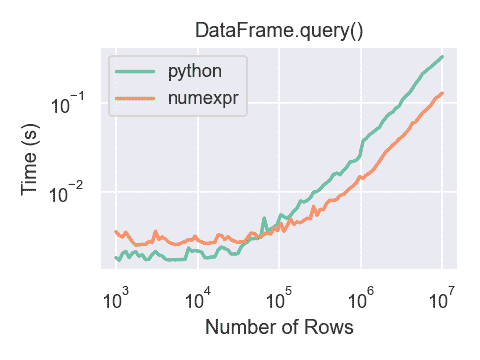
只有当您的框架具有大约 100,000 行以上时,使用numexpr引擎与DataFrame.query()才会看到性能优势。
此图是使用包含使用numpy.random.randn()生成的浮点值的 3 列的DataFrame创建的。
In [292]: df = pd.DataFrame(np.random.randn(8, 4),
.....: index=dates, columns=['A', 'B', 'C', 'D'])
.....:
In [293]: df2 = df.copy()
重复数据
如果您想要识别和删除 DataFrame 中的重复行,有两种方法可以帮助:duplicated和drop_duplicates。每个方法都以要用于识别重复行的列作为参数。
-
duplicated返回一个布尔向量,其长度为行数,指示行是否重复。 -
drop_duplicates删除重复行。
默认情况下,重复集的第一个观察行被视为唯一,但每种方法都有一个keep参数来指定要保留的目标。
-
keep='first'(默认):标记/删除除第一次出现之外的重复项。 -
keep='last':标记/删除除最后一次出现之外的重复项。 -
keep=False:标记/删除所有重复项。
In [294]: df2 = pd.DataFrame({'a': ['one', 'one', 'two', 'two', 'two', 'three', 'four'],
.....: 'b': ['x', 'y', 'x', 'y', 'x', 'x', 'x'],
.....: 'c': np.random.randn(7)})
.....:
In [295]: df2
Out[295]:
a b c
0 one x -1.067137
1 one y 0.309500
2 two x -0.211056
3 two y -1.842023
4 two x -0.390820
5 three x -1.964475
6 four x 1.298329
In [296]: df2.duplicated('a')
Out[296]:
0 False
1 True
2 False
3 True
4 True
5 False
6 False
dtype: bool
In [297]: df2.duplicated('a', keep='last')
Out[297]:
0 True
1 False
2 True
3 True
4 False
5 False
6 False
dtype: bool
In [298]: df2.duplicated('a', keep=False)
Out[298]:
0 True
1 True
2 True
3 True
4 True
5 False
6 False
dtype: bool
In [299]: df2.drop_duplicates('a')
Out[299]:
a b c
0 one x -1.067137
2 two x -0.211056
5 three x -1.964475
6 four x 1.298329
In [300]: df2.drop_duplicates('a', keep='last')
Out[300]:
a b c
1 one y 0.309500
4 two x -0.390820
5 three x -1.964475
6 four x 1.298329
In [301]: df2.drop_duplicates('a', keep=False)
Out[301]:
a b c
5 three x -1.964475
6 four x 1.298329
此外,你可以传递一个列的列表来识别重复项。
In [302]: df2.duplicated(['a', 'b'])
Out[302]:
0 False
1 False
2 False
3 False
4 True
5 False
6 False
dtype: bool
In [303]: df2.drop_duplicates(['a', 'b'])
Out[303]:
a b c
0 one x -1.067137
1 one y 0.309500
2 two x -0.211056
3 two y -1.842023
5 three x -1.964475
6 four x 1.298329
要通过索引值删除重复项,请使用Index.duplicated然后执行切片。keep参数也有相同的选项。
In [304]: df3 = pd.DataFrame({'a': np.arange(6),
.....: 'b': np.random.randn(6)},
.....: index=['a', 'a', 'b', 'c', 'b', 'a'])
.....:
In [305]: df3
Out[305]:
a b
a 0 1.440455
a 1 2.456086
b 2 1.038402
c 3 -0.894409
b 4 0.683536
a 5 3.082764
In [306]: df3.index.duplicated()
Out[306]: array([False, True, False, False, True, True])
In [307]: df3[~df3.index.duplicated()]
Out[307]:
a b
a 0 1.440455
b 2 1.038402
c 3 -0.894409
In [308]: df3[~df3.index.duplicated(keep='last')]
Out[308]:
a b
c 3 -0.894409
b 4 0.683536
a 5 3.082764
In [309]: df3[~df3.index.duplicated(keep=False)]
Out[309]:
a b
c 3 -0.894409
类似字典的 get() 方法
每个 Series 或 DataFrame 都有一个get方法,可以返回一个默认值。
In [310]: s = pd.Series([1, 2, 3], index=['a', 'b', 'c'])
In [311]: s.get('a') # equivalent to s['a']
Out[311]: 1
In [312]: s.get('x', default=-1)
Out[312]: -1
```## 通过索引/列标签查找值
有时你想提取一组值,给定一系列行标签和列标签,这可以通过`pandas.factorize`和 NumPy 索引实现。例如:
```py
In [313]: df = pd.DataFrame({'col': ["A", "A", "B", "B"],
.....: 'A': [80, 23, np.nan, 22],
.....: 'B': [80, 55, 76, 67]})
.....:
In [314]: df
Out[314]:
col A B
0 A 80.0 80
1 A 23.0 55
2 B NaN 76
3 B 22.0 67
In [315]: idx, cols = pd.factorize(df['col'])
In [316]: df.reindex(cols, axis=1).to_numpy()[np.arange(len(df)), idx]
Out[316]: array([80., 23., 76., 67.])
以前可以使用专用的DataFrame.lookup方法来实现这一点,该方法在 1.2.0 版本中已弃用,并在 2.0.0 版本中移除。 ## 索引对象
Index 类及其子类可以被视为实现了有序多重集。允许重复。
Index 还提供了查找、数据对齐和重新索引所需的基础设施。直接创建一个Index的最简单方法是将一个list或其他序列传递给Index:
In [317]: index = pd.Index(['e', 'd', 'a', 'b'])
In [318]: index
Out[318]: Index(['e', 'd', 'a', 'b'], dtype='object')
In [319]: 'd' in index
Out[319]: True
或使用数字:
In [320]: index = pd.Index([1, 5, 12])
In [321]: index
Out[321]: Index([1, 5, 12], dtype='int64')
In [322]: 5 in index
Out[322]: True
如果没有给出 dtype,Index会尝试从数据中推断 dtype。也可以在实例化Index时给出显式 dtype:
In [323]: index = pd.Index(['e', 'd', 'a', 'b'], dtype="string")
In [324]: index
Out[324]: Index(['e', 'd', 'a', 'b'], dtype='string')
In [325]: index = pd.Index([1, 5, 12], dtype="int8")
In [326]: index
Out[326]: Index([1, 5, 12], dtype='int8')
In [327]: index = pd.Index([1, 5, 12], dtype="float32")
In [328]: index
Out[328]: Index([1.0, 5.0, 12.0], dtype='float32')
你也可以传递一个name来存储在索引中:
In [329]: index = pd.Index(['e', 'd', 'a', 'b'], name='something')
In [330]: index.name
Out[330]: 'something'
如果设置了名称,将显示在控制台显示中:
In [331]: index = pd.Index(list(range(5)), name='rows')
In [332]: columns = pd.Index(['A', 'B', 'C'], name='cols')
In [333]: df = pd.DataFrame(np.random.randn(5, 3), index=index, columns=columns)
In [334]: df
Out[334]:
cols A B C
rows
0 1.295989 -1.051694 1.340429
1 -2.366110 0.428241 0.387275
2 0.433306 0.929548 0.278094
3 2.154730 -0.315628 0.264223
4 1.126818 1.132290 -0.353310
In [335]: df['A']
Out[335]:
rows
0 1.295989
1 -2.366110
2 0.433306
3 2.154730
4 1.126818
Name: A, dtype: float64
设置元数据
索引“大部分是不可变的”,但是可以设置和更改它们的name属性。你可以使用rename、set_names直接设置这些属性,默认返回一个副本。
有关多重索引的用法,请参见高级索引。
In [336]: ind = pd.Index([1, 2, 3])
In [337]: ind.rename("apple")
Out[337]: Index([1, 2, 3], dtype='int64', name='apple')
In [338]: ind
Out[338]: Index([1, 2, 3], dtype='int64')
In [339]: ind = ind.set_names(["apple"])
In [340]: ind.name = "bob"
In [341]: ind
Out[341]: Index([1, 2, 3], dtype='int64', name='bob')
set_names、set_levels和set_codes还接受一个可选的level参数
In [342]: index = pd.MultiIndex.from_product([range(3), ['one', 'two']], names=['first', 'second'])
In [343]: index
Out[343]:
MultiIndex([(0, 'one'),
(0, 'two'),
(1, 'one'),
(1, 'two'),
(2, 'one'),
(2, 'two')],
names=['first', 'second'])
In [344]: index.levels[1]
Out[344]: Index(['one', 'two'], dtype='object', name='second')
In [345]: index.set_levels(["a", "b"], level=1)
Out[345]:
MultiIndex([(0, 'a'),
(0, 'b'),
(1, 'a'),
(1, 'b'),
(2, 'a'),
(2, 'b')],
names=['first', 'second'])
```### 索引对象上的集合操作
两个主要操作是`union`和`intersection`。差异通过`.difference()`方法提供。
```py
In [346]: a = pd.Index(['c', 'b', 'a'])
In [347]: b = pd.Index(['c', 'e', 'd'])
In [348]: a.difference(b)
Out[348]: Index(['a', 'b'], dtype='object')
还提供了symmetric_difference操作,返回出现在idx1或idx2中的元素,但不在两者中都出现的元素。这等同于通过idx1.difference(idx2).union(idx2.difference(idx1))创建的索引,重复项被删除。
In [349]: idx1 = pd.Index([1, 2, 3, 4])
In [350]: idx2 = pd.Index([2, 3, 4, 5])
In [351]: idx1.symmetric_difference(idx2)
Out[351]: Index([1, 5], dtype='int64')
注意
从集合操作得到的索引将按升序排序。
在不同 dtype 的索引之间执行Index.union()时,索引必须转换为公共 dtype。通常,尽管不总是如此,这是对象 dtype。唯一的例外是在整数和浮点数据之间执行联合时。在这种情况下,整数值将转换为浮点数
In [352]: idx1 = pd.Index([0, 1, 2])
In [353]: idx2 = pd.Index([0.5, 1.5])
In [354]: idx1.union(idx2)
Out[354]: Index([0.0, 0.5, 1.0, 1.5, 2.0], dtype='float64')
```### 缺失值
重要
即使`Index`可以包含缺失值(`NaN`),如果不希望出现任何意外结果,应该避免使用它。例如,一些操作隐含地排除缺失值。
`Index.fillna`使用指定的标量值填充缺失值。
```py
In [355]: idx1 = pd.Index([1, np.nan, 3, 4])
In [356]: idx1
Out[356]: Index([1.0, nan, 3.0, 4.0], dtype='float64')
In [357]: idx1.fillna(2)
Out[357]: Index([1.0, 2.0, 3.0, 4.0], dtype='float64')
In [358]: idx2 = pd.DatetimeIndex([pd.Timestamp('2011-01-01'),
.....: pd.NaT,
.....: pd.Timestamp('2011-01-03')])
.....:
In [359]: idx2
Out[359]: DatetimeIndex(['2011-01-01', 'NaT', '2011-01-03'], dtype='datetime64[ns]', freq=None)
In [360]: idx2.fillna(pd.Timestamp('2011-01-02'))
Out[360]: DatetimeIndex(['2011-01-01', '2011-01-02', '2011-01-03'], dtype='datetime64[ns]', freq=None)
设置/重置索引
有时您会将数据集加载或创建到 DataFrame 中,并希望在已经这样做之后添加索引。有几种不同的方法。
设置索引
DataFrame 有一个set_index()方法,它接受一个列名(对于常规Index)或一个列名列表(对于MultiIndex)。要创建一个新的重新索引的 DataFrame:
In [361]: data = pd.DataFrame({'a': ['bar', 'bar', 'foo', 'foo'],
.....: 'b': ['one', 'two', 'one', 'two'],
.....: 'c': ['z', 'y', 'x', 'w'],
.....: 'd': [1., 2., 3, 4]})
.....:
In [362]: data
Out[362]:
a b c d
0 bar one z 1.0
1 bar two y 2.0
2 foo one x 3.0
3 foo two w 4.0
In [363]: indexed1 = data.set_index('c')
In [364]: indexed1
Out[364]:
a b d
c
z bar one 1.0
y bar two 2.0
x foo one 3.0
w foo two 4.0
In [365]: indexed2 = data.set_index(['a', 'b'])
In [366]: indexed2
Out[366]:
c d
a b
bar one z 1.0
two y 2.0
foo one x 3.0
two w 4.0
append关键字选项允许您保留现有索引并将给定列附加到 MultiIndex:
In [367]: frame = data.set_index('c', drop=False)
In [368]: frame = frame.set_index(['a', 'b'], append=True)
In [369]: frame
Out[369]:
c d
c a b
z bar one z 1.0
y bar two y 2.0
x foo one x 3.0
w foo two w 4.0
set_index中的其他选项允许您不删除索引列。
In [370]: data.set_index('c', drop=False)
Out[370]:
a b c d
c
z bar one z 1.0
y bar two y 2.0
x foo one x 3.0
w foo two w 4.0
重置索引
作为一种便利,DataFrame 上有一个名为reset_index()的新函数,它将索引值转移到 DataFrame 的列中,并设置一个简单的整数索引。这是set_index()的逆操作。
In [371]: data
Out[371]:
a b c d
0 bar one z 1.0
1 bar two y 2.0
2 foo one x 3.0
3 foo two w 4.0
In [372]: data.reset_index()
Out[372]:
index a b c d
0 0 bar one z 1.0
1 1 bar two y 2.0
2 2 foo one x 3.0
3 3 foo two w 4.0
输出更类似于 SQL 表或记录数组。从索引派生的列的名称存储在names属性中。
您可以使用level关键字仅删除索引的一部分:
In [373]: frame
Out[373]:
c d
c a b
z bar one z 1.0
y bar two y 2.0
x foo one x 3.0
w foo two w 4.0
In [374]: frame.reset_index(level=1)
Out[374]:
a c d
c b
z one bar z 1.0
y two bar y 2.0
x one foo x 3.0
w two foo w 4.0
reset_index接受一个可选参数drop,如果为 true,则简单丢弃索引,而不是将索引值放入 DataFrame 的列中。
添加临时索引
您可以为index属性分配自定义索引:
In [375]: df_idx = pd.DataFrame(range(4))
In [376]: df_idx.index = pd.Index([10, 20, 30, 40], name="a")
In [377]: df_idx
Out[377]:
0
a
10 0
20 1
30 2
40 3
返回视图与副本
警告
Copy-on-Write 将成为 pandas 3.0 的新默认设置。这意味着链式索引永远不会起作用。因此,SettingWithCopyWarning将不再必要。有关更多上下文,请参见此部分。我们建议打开 Copy-on-Write 以利用改进
pd.options.mode.copy_on_write = True
即使在 pandas 3.0 可用之前。
在设置 pandas 对象的值时,必须小心避免所谓的chained indexing。这里是一个例子。
In [378]: dfmi = pd.DataFrame([list('abcd'),
.....: list('efgh'),
.....: list('ijkl'),
.....: list('mnop')],
.....: columns=pd.MultiIndex.from_product([['one', 'two'],
.....: ['first', 'second']]))
.....:
In [379]: dfmi
Out[379]:
one two
first second first second
0 a b c d
1 e f g h
2 i j k l
3 m n o p
比较这两种访问方法:
In [380]: dfmi['one']['second']
Out[380]:
0 b
1 f
2 j
3 n
Name: second, dtype: object
In [381]: dfmi.loc[:, ('one', 'second')]
Out[381]:
0 b
1 f
2 j
3 n
Name: (one, second), dtype: object
这两者产生相同的结果,那么应该使用哪一个呢?理解这些操作的顺序以及为什么方法 2(.loc)远比方法 1(链式[])更可取是很有指导意义的。
dfmi['one']选择列的第一级,并返回一个单索引的 DataFrame。然后另一个 Python 操作dfmi_with_one['second']选择由'second'索引的系列。这由变量dfmi_with_one表示,因为 pandas 将这些操作视为独立事件。例如。独立调用 __getitem__,因此必须将它们视为线性操作,它们一个接一个地发生。
将其与df.loc[:,('one','second')]进行对比,后者传递了一个嵌套元组(slice(None),('one','second'))给单个__getitem__调用。这使得 pandas 能够将其视为单个实体处理。此外,这种操作顺序可能更快,并且如果需要,允许同时索引两个轴。

